Archived Blog Posts
Should I Salvage or Replace My Belongings After Water Damage?
2/14/2024 (Permalink)
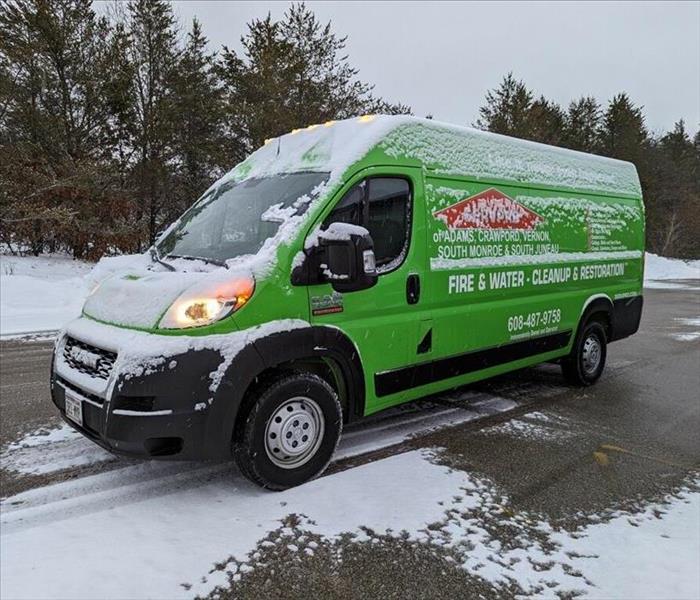 Contact us for professional guidance and restoration services to salvage as much as possible from your water-damaged property!
Contact us for professional guidance and restoration services to salvage as much as possible from your water-damaged property!
Water damage can be a distressing event, impacting your property and belongings. When faced with the aftermath of water damage, one of the important decisions homeowners face is whether to salvage or replace the affected items. In this blog, we'll delve into some factors to consider when determining whether salvaging or replacing items is the best course of action after water damage strikes.
1. Severity of Damage
Assess the severity of the damage incurred by the items. Some items may sustain minimal damage and can be salvaged through proper cleaning and restoration techniques. Others may suffer irreparable damage, especially if they've been submerged in water for an extended period or are highly porous materials like mattresses or particleboard furniture.
2. Risks and Contamination
Consider the potential risks associated with salvaging certain items. Porous materials that have been contaminated by sewage water or have developed mold growth pose hazards and are often unsalvageable. Items that can't be thoroughly cleaned and disinfected may compromise indoor air quality or pose risks upon use.
3. Sentimental and Monetary Value
Evaluate the sentimental or monetary value of the items affected by water damage. Items with sentimental value, such as family heirlooms or irreplaceable personal belongings, may warrant efforts for restoration, even if the damage is significant. Conversely, items with a lower replacement cost might be more cost-effective to replace than restore.
4. Restoration Feasibility and Cost
Consider the probability of restoration and associated costs. Professional restoration services, like those offered by SERVPRO of La Crosse County, can salvage many items through specialized techniques. However, extensive damage or higher restoration costs compared to replacement might influence the decision.
5. Time Considerations
Factor in the time required for restoration versus replacement. While restoration may take time, especially for intricate or valuable items, it can often be a worthwhile investment. Conversely, immediate replacement might be more practical for easily replaceable or less valuable items.
The decision between salvaging and replacing items after water damage isn't always straightforward. It involves weighing several factors, including the extent of damage, risks involved, sentimental value, feasibility of restoration, and associated costs. Often, a combination of salvaging and replacing various items offers the most practical solution.
At SERVPRO of La Crosse County, our expert technicians specialize in assessing water-damaged items and employing advanced restoration techniques. Contact us for professional guidance and restoration services to salvage as much as possible from your water-damaged property!
The 5 Most Common Severe Weather Threats in Wisconsin
1/13/2024 (Permalink)
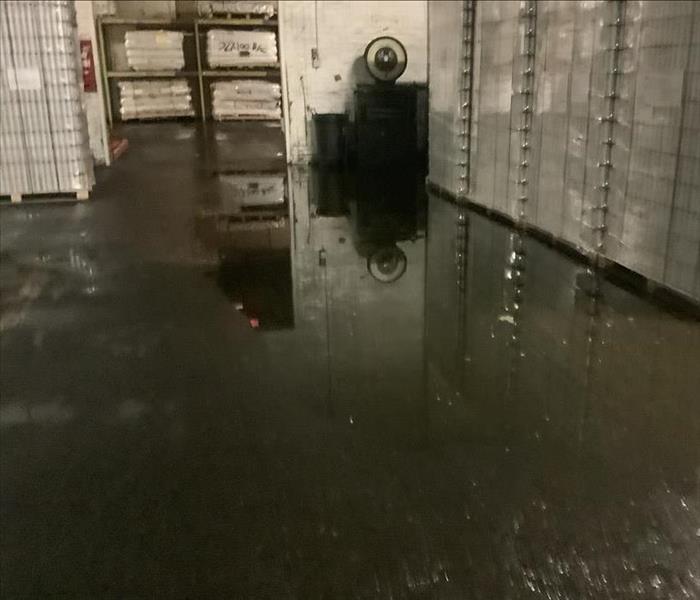 If your property faces severe weather-related damage, our SERVPRO® team is available 24/7 to provide professional restoration services!
If your property faces severe weather-related damage, our SERVPRO® team is available 24/7 to provide professional restoration services!
Wisconsin's diverse climate brings a range of severe weather threats, and being prepared for any scenario is crucial. In this blog, we'll delve into the 5 most common severe weather events in Wisconsin and provide detailed insights to help you protect your home and loved ones.
Severe Thunderstorms
Wisconsin frequently experiences severe thunderstorms, bringing strong winds, heavy rainfall, hail, and lightning. Take proactive measures by securing outdoor items, trimming trees, and staying informed through weather alerts. Designate a safe meeting place and ensure your family knows the emergency plan.
Tornadoes
Tornadoes are a significant concern in Wisconsin, especially during the spring and summer months. Develop a tornado safety plan, designate a safe room, and stay tuned to weather forecasts for timely tornado warnings. Practice tornado drills with your family to ensure everyone knows the proper response.
Winter Storms
Harsh winter weather, including heavy snowfall and icy conditions, is common in Wisconsin. Prepare for winter storms by stocking up on essentials, insulating your home, and having a reliable heating source. Keep driveways and walkways clear to prevent accidents, and stay updated on road conditions.
Blizzards
Blizzards bring a combination of heavy snowfall, high winds, and low visibility. Be ready for blizzard conditions by creating an emergency kit, winterizing your home, and avoiding unnecessary travel during severe winter weather. Keep communication devices charged and have an alternative heating source in case of power outages.
Derechos
Derechos are powerful, straight-line windstorms that can cause widespread damage. Secure loose items, reinforce windows and doors, and have a plan in place for power outages during derechos. Familiarize yourself with local evacuation routes and shelters.
Preparing for Wisconsin's Severe Weather
Stay Informed
Regularly check weather forecasts and alerts. Invest in a NOAA Weather Radio for immediate updates during severe weather events. Sign up for local emergency alerts to receive timely information.
Create a Comprehensive Emergency Kit
Assemble a well-stocked emergency kit with essentials like water, non-perishable food, first aid supplies, flashlights, and important documents. Customize the kit based on the specific needs of your family.
Prepare Your Home
Regularly inspect your home for vulnerabilities and make necessary repairs. Install storm shutters, reinforce doors and windows, and consider investing in a backup power source. Have an emergency contact list readily available for quick communication.
Wisconsin's varied climate brings a mix of severe weather threats, but with detailed preparation, you can navigate these challenges with confidence. Stay tuned to the SERVPRO of La Crosse County blog for more insights, safety tips, and expert advice. And remember, if your property faces severe weather-related damage, our SERVPRO® team is available 24/7 to provide professional restoration services!
How To Prevent and Respond to Kitchen Fires
12/13/2023 (Permalink)
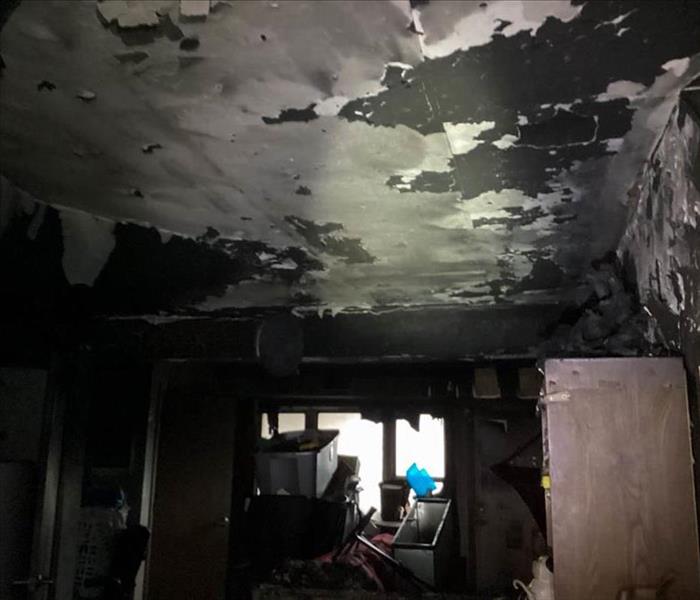 The kitchen is the heart of the home, but it's also one of the most common places for household fires to start.
The kitchen is the heart of the home, but it's also one of the most common places for household fires to start.
The kitchen is the heart of the home, but it's also one of the most common places for household fires to start, so it's essential to prioritize kitchen safety. In this blog, we'll share valuable tips on how to prevent kitchen fires and what to do if one occurs.
Preventing Kitchen Fires
Never Leave Cooking Unattended
One of the leading causes of kitchen fires is leaving food unattended on the stove or in the oven. Stay in the kitchen when cooking, and if you must step away, turn off the heat.
Keep Flammable Objects Away
Ensure that flammable objects such as dish towels, oven mitts, and paper towels are kept away from the stove, oven, and other heating appliances.
Install a Smoke Detector
Make sure your kitchen is equipped with a functioning smoke detector. Regularly check the batteries and replace them as needed.
Fire Extinguisher
Have a fire extinguisher in your kitchen and know how to use it. It can be a lifesaver in case of a small fire that can be contained.
What to Do If a Kitchen Fire Occurs
- Stay Calm: In case of a fire, the first rule is to stay calm. Panic can make the situation worse.
- Turn Off the Heat: If the fire is in a pot or pan, turn off the heat source. This can prevent the fire from spreading.
- Never Use Water on Grease Fires: For grease fires, never use water as it can cause the flames to flare up. Instead, cover the fire with a metal lid or use a fire extinguisher.
- Evacuate Safely: If the fire is spreading and cannot be controlled, evacuate the kitchen and close the door to contain the fire. Call 911 immediately.
- Do Not Attempt Heroics: While it's important to stay safe, never attempt to be a hero by trying to extinguish a large or spreading fire on your own. Leave it to the professionals!
Kitchen safety should always be a priority. By following these tips, you can significantly reduce the risk of kitchen fires and respond effectively if one occurs. Stay vigilant, keep your kitchen safe, and remember that your safety and the safety of your loved ones always come first.
If you ever experience a kitchen fire and need professional assistance in La Crosse, WI, contact SERVPRO of La Crosse County for expert fire damage restoration. We're here to help you get your home back to its pre-fire condition!
Professional vs. DIY Mold Removal
11/9/2023 (Permalink)
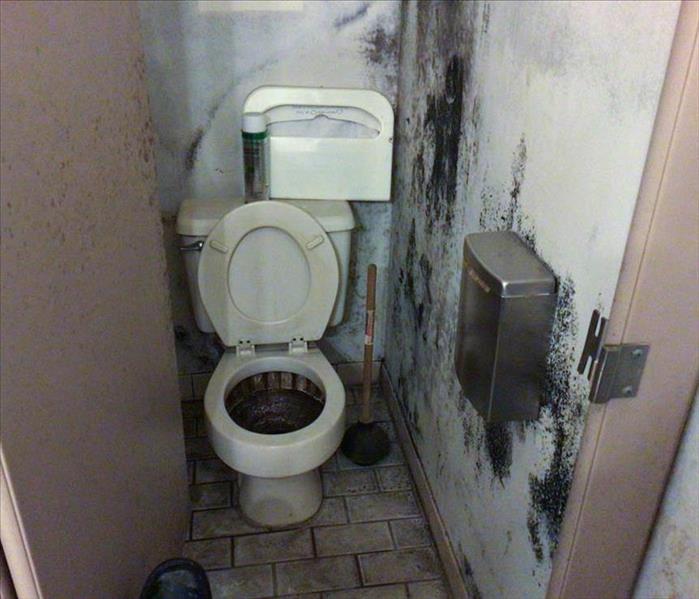 DIY projects can be satisfying, and they can save you money. However, mold removal is not always as straightforward as it may seem.
DIY projects can be satisfying, and they can save you money. However, mold removal is not always as straightforward as it may seem.
Homeowners here in La Crosse, WI, often face mold challenges due to our climate and environmental factors. While many people opt for DIY mold removal, it's essential to know when it's time to call in the professionals. In this blog, we'll help you make an informed decision about tackling mold issues in your home.
The Attraction of DIY Mold Removal
Mold removal is a common concern for homeowners in La Crosse, WI. Many people are tempted by the idea of handling it themselves. DIY projects can be satisfying, and they can save you money. However, mold removal is not always as straightforward as it may seem.
When DIY Mold Removal Works
For minor mold problems in small, non-porous areas, DIY solutions can be effective. Here are some situations where DIY mold removal may suffice:
- Surface Mold on Non-Porous Materials: If you discover mold growth on easy-to-clean, non-porous surfaces like tiles or glass, you can often remove it with commercial mold cleaners.
- Limited Mold Growth: If the affected area is small (less than 10 square feet) and the mold growth is superficial, DIY removal can be appropriate.
When to Call the Professionals
While DIY solutions have their place, there are circumstances where professional mold remediation becomes crucial:
- Extensive Mold Growth: When mold covers a large area, spreads through hidden spaces, or infiltrates building materials, it's time to call in the experts.
- Hidden Mold: Mold often lurks in hidden spaces, such as within walls, under flooring, or in HVAC systems. Professionals have the tools and expertise to locate and remove it.
- Recurring Mold Problems: If you've previously attempted DIY mold removal, and the mold keeps coming back, it's a sign of an underlying issue that professionals can identify and address.
The Benefits of Professional Mold Remediation
Professional mold remediation offers several advantages:
- Thoroughness: Professionals conduct comprehensive inspections and address the root causes of mold growth.
- Safety: They have the necessary protective gear and follow industry best practices to ensure safety.
- Expertise: Professionals are trained and experienced in handling mold removal effectively.
- Prevention: They can advise on preventive measures to reduce the likelihood of future mold issues.
Protecting Your Clothes, Belongings, and Furniture
In addition to the potential structural damage, mold can also wreak havoc on your personal belongings, including clothes and furniture. Mold spores can settle on fabrics, leather, wood, and upholstery, leading to unsightly stains, musty odors, and deterioration. Dealing with mold on your clothes, cherished belongings, or furniture can be challenging, as it often requires more specialized cleaning techniques than simple surface mold removal. When mold extends its reach to your personal items, it becomes even more vital to consider professional mold remediation to ensure the thorough and safe removal of mold from your living space.
While DIY mold removal can be suitable for minor issues, it's essential to recognize when it's time to bring in the professionals. In La Crosse, WI, where mold problems can be persistent, turning to experts like SERVPRO® of La Crosse County ensures a thorough, safe, and effective solution. Don't hesitate to contact us when you need professional mold remediation assistance. We're here to help you protect your home from mold-related challenges.
DIY Tips for Preventing Water Damage in Your Wisconsin Home
10/9/2023 (Permalink)
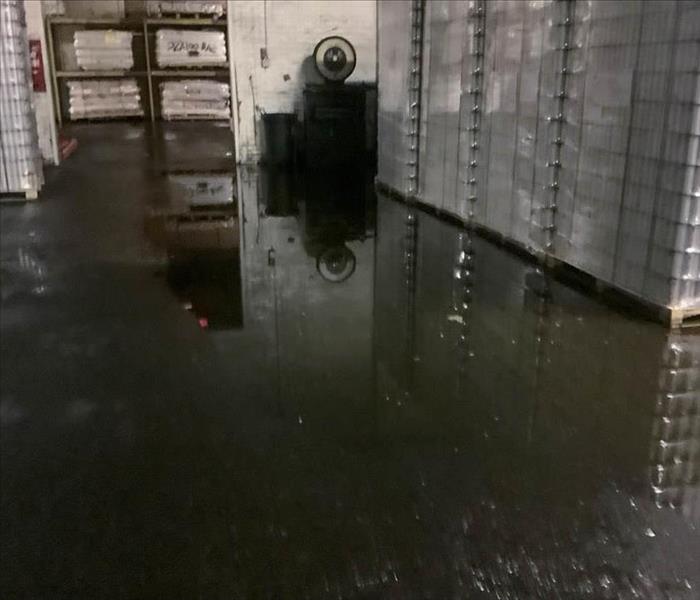 By implementing these DIY tips, Wisconsin homeowners can proactively protect their homes from water damage.
By implementing these DIY tips, Wisconsin homeowners can proactively protect their homes from water damage.
In Wisconsin, where rain, snow, and sudden weather changes are common, preventing water damage in your home is essential. We understand that many homeowners prefer a proactive approach to protect their properties. In this blog, we'll provide you with valuable DIY tips and insights to help safeguard your Wisconsin home from water damage.
Maintain Your Gutters and Downspouts
Wisconsin's varying weather patterns mean that proper gutter and downspout maintenance is crucial. Clean your gutters regularly to prevent clogs that can lead to water overflow and potential damage to your roof, siding, and foundation. Extend downspouts away from your home's foundation to direct rainwater away from the basement.
Check and Seal Windows and Doors
Inspect the seals around your windows and doors regularly. Apply weatherstripping or caulk to seal any gaps or cracks to prevent water from infiltrating your home during heavy rains or snowstorms. Proper sealing not only prevents water damage but also improves energy efficiency.
Landscape with Proper Grading
Ensure that your yard's slope and landscaping promote proper drainage away from your home's foundation. This prevents water from pooling around your house, which can lead to basement flooding and foundation issues. Adjust the grading as needed to encourage water to flow away from your home.
Maintain Your Roof
Regularly inspect your roof for missing shingles, damaged flashing, or signs of wear and tear. Promptly address any issues to prevent roof leaks during heavy rains or snow. A well-maintained roof is your first line of defense against water damage.
Install a Sump Pump
In areas prone to basement flooding, like parts of Wisconsin, consider installing a sump pump. A sump pump can help remove excess groundwater and prevent basement flooding, especially during spring thaws and heavy rains.
Monitor Indoor Humidity
Wisconsin's climate can lead to indoor humidity fluctuations, which can contribute to water damage and mold growth. Use a dehumidifier to maintain indoor humidity levels between 30-50%. This can help prevent condensation and moisture-related issues.
Regularly Inspect Plumbing
Inspect your plumbing for leaks and drips regularly. Even small leaks can lead to significant water damage over time. Address any plumbing issues promptly, and consider installing water leak detection devices to alert you to potential problems.
By implementing these DIY tips, Wisconsin homeowners can proactively protect their homes from water damage and maintain a safe, dry living environment. Remember that regular maintenance and vigilance are key to preventing water damage in your beloved Wisconsin property. If you ever encounter water damage that is beyond your DIY capabilities, don't hesitate to contact SERVPRO of La Crosse County for professional assistance. We're here to help Wisconsinites restore their homes to their pre-damage condition.
Preparing Your Boat or RV for Storm Season: Storage and Safety Tips
9/11/2023 (Permalink)
Storm season can be a challenging time for boat and RV owners. Strong winds, heavy rains, and potential flooding pose a significant risk to these valuable investments. To ensure the safety and protection of your boat or RV, it's essential to take proactive measures before the storm hits. In this blog post, we will provide you with storage and safety tips to help you prepare for storm season.
Find Safe Storage
Finding suitable storage for your boat or RV is crucial during storm season. Consider the following options:
- Indoor storage: If available, storing your boat or RV indoors provides the highest level of protection against storms, including wind, rain, and potential debris damage.
- Covered storage: If indoor storage is not an option, look for covered storage facilities to protect your vehicle from direct exposure to the elements.
- Secure your property: If storing at home, choose a location away from trees, power lines, or any other potential hazards. Use sturdy tie-down straps and anchors to secure your boat or RV.
Perform Maintenance and Inspections
Before storing your boat or RV for storm season, it's essential to conduct thorough maintenance and inspections:
- Check for leaks: Inspect your vehicle's roof, windows, doors, and any other potential areas where water could enter. Repair any leaks promptly.
- Secure loose items: Remove any loose items inside your boat or RV that could become projectiles during strong winds.
- Trim trees and branches: If storing at home, ensure trees near the storage area are properly trimmed to minimize the risk of falling limbs or debris.
- Test the security system: If your boat or RV has a security system, ensure it is in proper working condition before storing.
Prepare for Power Outages
During severe storms, power outages are common. Taking the following steps will help you deal with a potential power loss:
- Charge batteries: Make sure your boat's battery, RV generator, and any backup power sources are fully charged before the storm.
- Stock up on supplies: Have enough food, drinking water, flashlights, and batteries to last through an extended power outage.
- Consider a backup generator: If you anticipate prolonged power outages, consider investing in a reliable backup generator to power essential appliances and systems.
Review Insurance Coverage
Review your boat or RV insurance policy to ensure you have adequate coverage for storm-related damages:
- Verify coverage limits: Check if your policy covers weather-related damages, including wind, hail, or flooding. If not, consider adding additional coverage.
- Document your possessions: Take photos or videos of your boat or RV, both inside and out, to document its condition before the storm. This documentation will be valuable if you need to file an insurance claim later.
Stay Informed and Follow Safety Guidelines
Stay updated with weather forecasts and follow safety guidelines provided by local authorities. Sign up for weather alerts, register for local weather alerts through mobile apps or email notifications. If your area is at risk of severe storms or flooding, familiarize yourself with evacuation plans and follow the advice of local authorities. Secure loose property. If at all possible , make it possible to store your boat or RV indoors, ensure all loose items are properly secured or removed before the storm arrives. For boat owners, monitor water levels in marinas or docking areas and follow guidance from harbor masters or marina operators.
Preparing your boat or RV for storm season requires careful planning and proactive measures. By finding safe storage, performing maintenance, preparing for power outages, reviewing insurance coverage, and staying informed, you can mitigate potential risks and safeguard your valuable investments. Remember, the safety of yourself and others should always be the top priority. Stay alert, follow safety guidelines, and be prepared for whatever storm season may bring.
What Should I Look for in a Fire Restoration Company?
8/20/2023 (Permalink)
Dealing with the aftermath of a fire is a daunting and challenging experience. Fire damage can result in significant financial and emotional burdens, and the process of restoring your home can be complicated. Fortunately, you don't have to face these challenges alone. A fire restoration company can help you through this difficult time. In this blog post, we'll discuss what you should look for in a fire restoration company.
Accreditation and License
When choosing a fire restoration company, it's crucial to consider whether they are licensed, certified, and accredited. Accreditation demonstrates that the company follows industry standards and procedures. The Institute of Inspection, Cleaning, and Restoration Certification (IICRC) provides certifications for professionals in the fire and smoke restoration industry.
Experience and Expertise
Experience is critical when it comes to choosing a fire restoration company. A company with several years of experience will have dealt with an array of restoration scenarios, making them well-suited to handle whatever complexities your restoration may entail. Hire contractors that have a team of professionals that possess extensive expertise in the field of fire damage restoration.
Time is of the essence when it comes to fire damage restoration. A reputable fire restoration company should have the availability to respond immediately to your needs. When a fire occurs, the company should send personnel immediately to assess the situation and begin the restoration process as quickly as possible. This promptness helps to mitigate the damage significantly and prevent further losses.
References and Reviews
Reading reviews from past clients and referrals are vital when choosing a fire restoration company. Consider researching and reaching out to family and friends who can offer personal recommendations for service providers in the restoration industry. Online reviews can also provide valuable insight into the quality of service and level of satisfaction previous customers have received.
Equipment and Resources
A fire restoration company should have access to the right equipment, tools, and resources needed to restore your property effectively. Having the resources needed for your specific situation is critical, as each fire damage restoration project presents unique challenges that require specialized equipment.
Customer Service
Choosing a fire restoration company that is committed to providing a positive customer experience is essential. A company that values communication and transparency while providing personalized, responsive service can make the restoration process a lot smoother. Choose companies that are transparent about the repair and restoration process, including how long it will take, and expected costs.
Ensure that the company you choose has various insurance covers to safeguard your property and technicians in the event of an accident. Also, check to see whether the company is licensed for restoration services and the areas they are allowed to serve.
When it comes to fire damage restoration, selecting a reputable, experienced, and qualified company is essential. Their knowledge and expertise can be a critical aspect of reclaiming your property after a disaster. Always take the time to do your research, check reviews and references, and ensure you work with a licensed and insured company. With these factors in mind, you can choose a reliable and trustworthy fire restoration company that can ensure your home is restored to its original state.
Common Water Issues in Commercial Buildings and How to Address Them
7/27/2023 (Permalink)
Water is a vital resource in commercial buildings, serving various purposes such as sanitation, heating, cooling, and general operations. However, commercial buildings are susceptible to various water-related issues that can disrupt daily operations, compromise safety, and lead to costly repairs. In this blog post, we will explore some common water issues in commercial buildings and provide insights on how to address and prevent them effectively.
Plumbing Leaks and Drips
One of the most prevalent water issues in commercial buildings is plumbing leaks and drips. These can occur in pipes, faucets, toilets, or any other plumbing fixtures. Leaks not only waste water but can also cause structural damage, mold growth, and higher water bills. Regularly inspect your plumbing system for any signs of leaks, such as dampness, water stains, or unusual odors. Promptly repair or replace faulty components to prevent further damage and conserve water.
Clogged Drains and Sewer Backups
Clogged drains and sewer backups can disrupt daily operations and pose health hazards in commercial buildings. They can be caused by a buildup of debris, grease, or foreign objects in the plumbing system. Implement regular drain maintenance practices such as routine cleaning, avoiding the disposal of inappropriate materials, and educating occupants about proper waste disposal. If you encounter persistent or severe clogs, consult professional plumbing services to address the issue effectively.
Low Water Pressure
Insufficient water pressure can affect various operations in commercial buildings, including proper functioning of faucets, showers, and equipment that relies on water pressure. Low water pressure can result from issues such as pipe corrosion, clogs, or problems with the municipal water supply. Identify the underlying cause by consulting a professional plumber, who can recommend appropriate solutions such as pipe replacement, installing pressure-boosting devices, or addressing municipal supply issues.
Water Heater Problems
Commercial buildings often have larger water heating systems to meet the demand for hot water. However, water heater problems can arise, including inadequate hot water supply, temperature fluctuations, or leaks. Regular maintenance, including flushing the water heater tank, inspecting heating elements, and checking for signs of corrosion, can help prevent these issues. If problems persist, contact a professional technician to assess and repair the water heater system.
Water Quality Concerns
Water quality is a crucial aspect of commercial buildings, as it impacts the health and safety of occupants. Common water quality concerns include discoloration, odor, and taste issues. These problems can be caused by pipe corrosion, contaminants, or inadequate water treatment systems. Consider installing water filtration or purification systems to ensure clean and safe water for consumption and other purposes. Regularly test the water quality to identify any issues early on.
Sprinkler System Malfunctions
For commercial buildings equipped with fire sprinkler systems, malfunctions can be a significant concern. Issues such as leaking sprinkler heads, faulty valves, or inadequate water supply can compromise the effectiveness of fire suppression systems. Regular inspections, maintenance, and testing of sprinkler systems are essential to ensure they are in proper working condition and comply with fire safety regulations.
Content Cleaning After Water Damage
Additionally, after experiencing water damage in a commercial building, it is essential to address content cleaning thoroughly. Water-damaged items such as furniture, documents, electronics, and inventory require specialized attention to prevent further damage and restore functionality. Content cleaning professionals use advanced techniques and equipment to assess the extent of damage, remove moisture, and mitigate the risk of mold growth or other contaminants. They employ methods such as drying, dehumidification, cleaning, disinfection, and odor removal to salvage and restore water-damaged items whenever possible. Prompt and effective content cleaning ensures the preservation of valuable assets, minimizes business disruptions and promotes a swift return to normal operations.
Addressing common water issues in commercial buildings is crucial to ensure the smooth functioning of daily operations, conserve water, and maintain a safe environment for occupants. Regular inspections, prompt repairs, and preventive measures play a vital role in mitigating these issues. By proactively managing water issues, you can enhance operational efficiency, reduce costs, and promote a healthy and comfortable environment in your commercial building.
Protecting Your Belongings: Content Cleaning in High Risk Flood Areas
6/6/2023 (Permalink)
When flooding occurs, it can cause significant damage to homes and businesses. Even after the water recedes, there can be lasting effects, including damage to contents such as furniture, electronics, and personal belongings. Content cleaning is an important part of the flood restoration process, especially in areas with a high risk of flooding. In this blog, we'll discuss content cleaning and what you can do to protect your belongings in the event of a flood.
What is Content Cleaning?
Content cleaning is the process of cleaning and restoring personal belongings that have been damaged in a flood or other disaster. This can include furniture, electronics, clothing, and other items. The goal of content cleaning is to salvage as much as possible and return items to their preloss condition.
Steps to Protect Your Belongings in the Event of a Flood
Prepare in Advance
If you live in an area with a high risk of flooding, it's important to prepare in advance to protect your belongings. Make sure to keep important documents, such as insurance policies and identification, in a safe, waterproof location. Consider elevating furniture and appliances off the ground, and store valuable items on high shelves or in waterproof containers.
Act Quickly
If flooding occurs, it's important to act quickly to protect your belongings. Remove items from the affected area as soon as possible to prevent further damage. Wear gloves and other protective gear, as flood water can contain contaminants that are harmful to your health.
Dry Out Your Belongings
Once your belongings have been removed from the flooded area, it's important to dry them out as quickly as possible. This can be done using fans and dehumidifiers, or by taking items outside to dry in the sun. It's important to dry out items thoroughly to prevent the growth of mold and mildew.
Consult with a Professional
In some cases, it may be necessary to consult with a professional content cleaning service. A content cleaning professional can assess the damage to your belongings and provide recommendations for restoration. They have specialized equipment and expertise to clean and restore items that may be difficult to salvage on your own.
Document Your Losses
Finally, it's important to document your losses for insurance purposes. Take photos of your belongings before and after the flood, and keep a list of all items that have been damaged or lost. This will help you to file an accurate insurance claim and ensure that you receive appropriate compensation for your losses.
Content cleaning is an important part of the flood restoration process, especially in areas with a high risk of flooding. By preparing in advance, acting quickly, drying out your belongings, consulting with a professional, and documenting your losses, you can protect your belongings and ensure that you receive appropriate compensation for your losses. If you have experienced a flood or other disaster, contact a content cleaning professional to learn more about your options for restoration.
Restoring Your Content After a Mold Loss: A Comprehensive Guide
5/23/2023 (Permalink)
Mold is a common problem in many households, and it can cause extensive damage to your belongings, including furniture, clothing, and sentimental items. Dealing with a mold loss can be overwhelming, but with the right knowledge and approach, you can restore your content and minimize your losses. In this comprehensive guide, we will provide you with valuable information and practical tips on how to restore your content after a mold loss.
Safety First: Mold Remediation
Before you start restoring your content, it's crucial to prioritize safety. Mold can pose serious risks, and it's essential to take proper precautions to protect yourself and others. If the mold loss is extensive or if you have any concerns, it's best to hire a professional mold remediation company to assess the situation and handle the cleanup process.
Assessing the Damage
Once the mold has been remediated, it's time to assess the damage to your content. Take an inventory of all the items that have been affected by mold and determine the extent of the damage. Some items may be salvageable with proper cleaning and restoration techniques, while others may need to be discarded if the damage is too severe.
Sorting and Prioritizing
Sorting and prioritizing your content is a crucial step in the restoration process. Start by categorizing your items into three categories: salvageable, questionable, and unsalvageable. Salvageable items are those that can be cleaned and restored to their pre-mold condition, questionable items are those that may require additional assessment or testing, and unsalvageable items are those that are beyond repair and need to be discarded.
Prioritize the restoration process based on the value and sentimental importance of each item. Items with sentimental value such as family heirlooms or irreplaceable photographs may be worth investing more time and effort into restoring, while items of lesser importance may be lower on your priority list.
Cleaning and Restoration Techniques
The cleaning and restoration techniques you use will depend on the type of content that has been affected by mold. Here are some common content categories and the recommended restoration techniques:
Furniture: For moldy furniture, start by vacuuming the surface with a HEPA filter vacuum to remove loose mold spores. Then, clean the furniture with a mild detergent solution or a commercial mold cleaner, following the manufacturer's instructions. If the furniture is made of porous materials such as fabric or wood, it may need to be professionally cleaned or refinished.
Clothing: Moldy clothing can usually be cleaned by washing them with a mild detergent and warm water. For delicate or valuable clothing, it's best to consult with a professional cleaner.
Electronics: Mold can damage electronics, and it's crucial to handle them with care. If your electronics have been affected by mold, do not turn them on, as it can cause further damage. Instead, unplug them and wipe the surface with a cloth dampened with isopropyl alcohol or a commercial electronics cleaner. If the mold has penetrated the internal components, it's best to consult with a professional electronics technician for restoration.
Documents and Books: Moldy documents and books should be handled with care to prevent further damage. If the pages are still wet, carefully separate them and lay them flat to dry in a well-ventilated area. Once they are dry, you can gently brush off any loose mold with a soft brush or cloth. If the documents or books are valuable or have sentimental value, it's best to consult with a professional document restoration service for further cleaning and restoration techniques.
Artwork and Decorations: Moldy artwork and decorations may require special care depending on the type of material they are made of. For paintings, you may need to consult with a professional art restorer for proper cleaning and restoration techniques. For other decorations such as ceramic or glass items, they can typically be cleaned with a mild detergent solution or a commercial mold cleaner.
Restoring content after a mold loss can be a challenging and time-consuming process. If you are unsure about the restoration techniques or if you have valuable or sentimental items that require special care, it's best to seek professional help, such as our SERVPRO of La Crosse County team. Our technicians have the expertise and equipment necessary to properly restore your content and ensure that it is safe to use or display again.
Textile Restoration After a Fire: What You Need to Know
4/13/2023 (Permalink)
Fires can be devastating, causing damage not only to the structure of a building but also to personal belongings such as clothes, bedding, and furniture. While it can be challenging to restore these items after a fire, it is often possible with the help of professional restoration services. In this blog, we will explore the specific challenges associated with textile restoration after a fire and discuss the methods used to restore fabrics to their original condition.
Types of Damage Caused by Fire and Smoke
The damage caused by fire and smoke can vary depending on several factors, including the intensity of the fire, the type of materials that burned, and the length of time that the fabric was exposed to smoke and soot. Common types of damage include discoloration, odors, and soot buildup. Smoke and soot can penetrate deep into the fibers of fabrics, making it challenging to remove them without causing further damage.
Methods Used for Textile Restoration
When it comes to restoring textiles after a fire, there are several methods that restoration professionals may use. These include dry cleaning, wet cleaning, and ozone treatment.
Dry Cleaning: This method involves using solvents and other cleaning agents to remove soot and smoke damage from fabrics. Dry cleaning is typically used for delicate fabrics that cannot be wet cleaned, such as silk or wool.
Wet Cleaning: Wet cleaning involves using water-based cleaning agents to remove soot and smoke damage from fabrics. This method is typically used for more robust fabrics that can withstand water, such as cotton or polyester.
Ozone Treatment: Ozone treatment involves exposing fabrics to high levels of ozone, which helps to break down the odor-causing molecules left behind by smoke and soot. This method is often used in combination with other cleaning methods to remove odors from fabrics.
Challenges of Textile Restoration
Restoring textiles after a fire can be a challenging and time-consuming process. It requires specialized equipment and expertise to ensure that the fabrics are properly cleaned without causing further damage. In addition, fabrics that have been exposed to water during the firefighting process may be at risk for mold growth if not properly dried and treated.
Why You Should Hire a Professional Restoration Service
If you are dealing with textile damage after a fire, it is essential to hire a professional restoration service, such as SERVPRO of LaCrosse County, with experience in textile restoration. Our team has access to specialized equipment and cleaning agents that can effectively remove soot and smoke damage from fabrics without causing further damage. We also have the expertise to determine which cleaning method is appropriate for each type of fabric, ensuring that your belongings are restored to their original condition.
In conclusion, restoring textiles after a fire can be a challenging process, but with the help of professional restoration services, it is often possible to restore fabrics to their original condition. By understanding the specific challenges associated with textile restoration after a fire and the methods used to address them, you can make informed decisions about how to restore your belongings and get your life back on track after a fire.
Restoring Your Belongings: The Importance of Contents and Textile Restoration After Water Damage
3/11/2023 (Permalink)
When a home or business suffers damage from water, fire, mold, or other disasters, contents restoration is often necessary to restore personal belongings and valuable items. Restoration professionals are trained to handle contents restoration and use various techniques and equipment to achieve the best results. In this blog, we'll discuss how restoration professionals handle contents restoration and the different techniques and equipment commonly used.
Inventory and Sorting
The first step in contents restoration is inventory and sorting. Restoration professionals will carefully document and catalog all items that need restoration, making note of the type of damage and the materials involved. They will then sort the items into categories based on the severity of damage and the restoration techniques needed.
Cleaning and Deodorizing
Once the inventory and sorting is complete, restoration professionals will begin the cleaning and deodorizing process. Depending on the type of damage, different techniques and equipment may be used.
For example, if items have been damaged by smoke or fire, restoration professionals may use ultrasonic cleaning equipment to remove soot and smoke particles from the surface of the items. If items have been damaged by water, they may use specialized drying equipment, such as dehumidifiers and air movers, to remove moisture and prevent mold growth.
Electronics Restoration
Electronics such as televisions, computers, and other devices can also be damaged by disasters. Restoration professionals can use specialized equipment to clean and restore these items.
Ultrasonic cleaning equipment is often used for electronics restoration. This process involves immersing the electronic device in a tank of cleaning solution and using ultrasonic waves to dislodge dirt and debris from the surface.
Document Restoration
Documents, photos, and other paper items can also be damaged by disasters. Restoration professionals can use specialized equipment and techniques to restore these items.
Freeze drying is a common technique used for document restoration. This involves freezing the documents and then using a vacuum to remove the moisture. This process can help to prevent further damage and preserve the documents for future use.
Textile Restoration
When your home or business experiences water damage, your textiles and fabrics can be heavily impacted. From carpets and upholstery to drapery and clothing, water damage can cause staining, discoloration, and even mold growth. Textile restoration professionals are trained to handle these issues and can use specialized techniques to restore your textiles and fabrics to their pre-damage condition.
The first step in textile restoration after water damage is to remove any standing water and dry the affected area. Once the area is dry, restoration professionals will assess the damage to the textiles and fabrics and determine the best course of action.
Depending on the severity of the damage, restoration professionals may use a combination of cleaning techniques and equipment to restore the textiles. For example, they may use steam cleaning equipment to remove dirt and stains from carpets and upholstery. They may also use ozone generators to remove any odors that have resulted from the water damage.
If the textiles have been heavily damaged and cannot be restored, restoration professionals may recommend replacement. However, in many cases, textiles can be successfully restored using specialized techniques and equipment.
Storage and Moving
During the contents restoration process, it may be necessary to move items out of the home or business to a secure storage facility. Restoration professionals will carefully pack and transport the items to prevent further damage and ensure they are stored in a safe and secure location.
Once the restoration process is complete, restoration professionals will carefully move the items back into the home or business and ensure they are properly placed and secured.
Contents restoration is an essential part of the restoration process after a disaster. Restoration professionals use a variety of techniques and equipment to carefully clean, restore, and preserve personal belongings and valuable items. If your home or business has suffered damage from water, fire, mold, or other disasters, it's important to contact a professional restoration company to ensure the best results for contents restoration.
How to file a water damage claim.
2/12/2023 (Permalink)
Water damage can be devastating. It's a stressful time for everyone involved, including you and your insurance company. With the right information and support, however, you can get through this quickly and easily. So here are four steps to take if you have water damage at home or business.
1. Call in the experts
At the first sign of damage give the experts at SERVPRO a call. We will send out one of our qualified technicians immediately to begin assessing your situation. They will begin by taking photos of affected areas so that they can be used as evidence later on when filing a claim with insurance companies. Next they will begin removing standing water from carpets and hard surfaces using portable extraction units that produce powerful suction forces capable of pulling up even heavy amounts of moisture within minutes. This process allows them all remaining moisture content within these materials which prevents mold growth during cleanup efforts while also making sure that there's nothing left behind after this step has been completed successfully.
2. Document the damages
Document the damages Once you have a good idea of what was damaged, it's time to document and photograph the damage. You'll want to take multiple pictures from different angles so that you can show how much of your stuff was affected by water. Keep track of what was damaged, including receipts for any cleaning or repairs (if possible). You may also want to write down where each item came from and its value in case there are any disputes down the line about coverage limits or replacement costs. Lastly, keep a list of all contact information for anyone who has been helping out with the process.
3. Determine the cause of your water loss
Once you have your insurance claim form, it's time to figure out what type of damage has been done. You'll want to determine the cause of your water loss so that you can file an accurate claim and get reimbursed for all of your losses as quickly as possible.
There are many ways that water can get into your home, pipes may burst from age or pressure and plumbing fixtures (such as sinks) may leak due to poor installation or damage. Rainwater can seep through cracks in roofs or walls after heavy rain fall.
To determine whether or not filing an insurance claim is right for you, take some time first by asking yourself these questions: What type of insurance do I need? How much time do I have before things start getting worse?
Call the Professionals
If you have water damage at your home or business, call SERVPRO 24/7. When you call us after a flooding event, we will send over a professional technician who will assess how much work needs to be done onsite before beginning any cleanup process. We use advanced equipment and techniques to extract all standing water from your property so that mold doesn't grow inside your walls or under floors where it can cause further damage down the road if left untreated properly now!
Reasons Why You Shouldn’t Ignore Water Damage
12/20/2022 (Permalink)
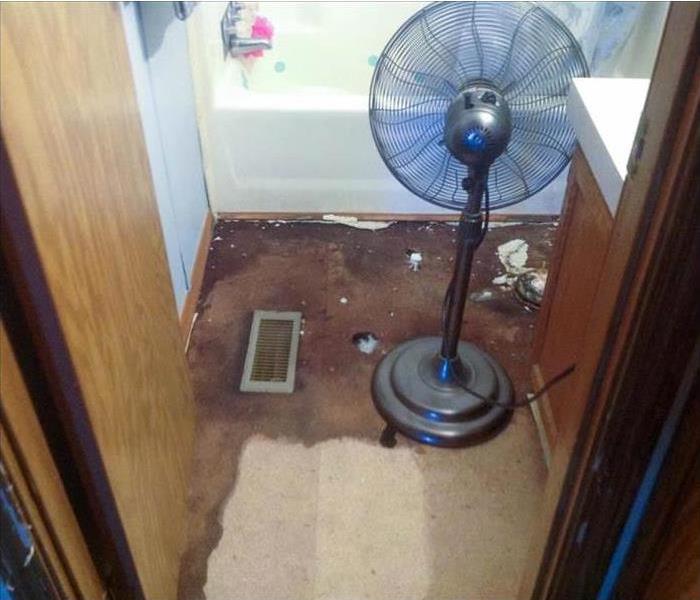 Water damage can cause mold, and mold growth can lead to structural damage.
Water damage can cause mold, and mold growth can lead to structural damage.
Reasons Why You Shouldn’t Ignore Water Damage
Water damage is one of the most common causes of home repair problems. Even a small amount of water can cause significant damage over time if left unchecked. Water leaks often occur in pipes or appliances and may be hard to detect without you noticing some visual signs. You should call a professional to inspect your home for water damage every time you notice any sign of moisture inside your home.
Water damage will cause mold.
The first step in preventing mold is to act fast. If you’ve got water damage, you need to get it taken care of right away.
If mold stays untreated, it can cause all sorts of damage to the structure of your property and its belongings.
Water damage can lead to structural damage.
Water damage can cause mold, and mold growth can lead to structural damage. Mold grows when moisture gets trapped inside of a building and has a surface upon which it can grow. If the water leak is severe enough, the fungal spores from the mold will spread throughout your property and take up residence.
Water damage can lead to rust and corrosion.
The effects are often more severe when left untreated, as water can cause significant damage to your home's structure and building materials. That's why it's important to act quickly if you detect any signs of water in your apartment or home—the sooner we intervene, the less likely it is that the issue will escalate into something expensive down the road!
Make sure you address any water damage in your home right away
The longer you wait to address water damage in your home, the more serious the problem will become. Mold is one of the most common results of water damage, and it can cause serious damage. In addition to mold, rust and corrosion also can lead to expensive repairs if they aren't addressed right away.
If you don’t deal with the water damage quickly, it can grow out of control. In fact, a severe enough leak can cause structural damage to your property and make it uninhabitable. If you think you have a water leak, it's important to act quickly. The longer the leak goes unnoticed and unfixed, the more damage it can do—and that means higher costs for repairs.
Water damage can cause a lot of problems for your home, and if you don’t take care of it right away, it’s only going to get worse. If you see signs of water damage in your house or notice that there is dampness in the walls or floors, please contact a professional immediately. This way they can do everything they can to avoid mold growth, structural damage, or costly repairs later on down the road when things have gotten even worse! SERVPRO is always on standby and ready to help.
What Does It Mean If My Floors Are Warping?
11/14/2022 (Permalink)
What Does It Mean If My Floors Are Warping?
If you own a home and have wood flooring, you probably know how easy it is to incur damage. Wood floors can be scratched, dinged, and stained by everyday objects like shoes or furniture. But what do you do if your floors are warping? That’s when things get serious. Warped wood flooring is not only unattractive; it can also cause major structural issues in your home that will cost thousands of dollars to fix.
There are several reasons why wood warps. As we explore the topic further below, we hope this information will help homeowners understand what they should look out for so they can prevent their floors from becoming warped in the first place!
Wood flooring is a natural product
Wood flooring is a natural product and will absorb water. The wood that makes up your flooring will not give back the water it absorbs, which means it can cause damage to your floors. Water under the floor can cause warping and cracking or crevices in your flooring.
If you have any cracks in your floors already, or if there are gaps between boards, this can allow moisture to get into them and cause more problems.
Wood absorbs moisture, but doesn’t give it back
The first thing you should know is that wood absorbs water, but it doesn’t give it back. This means that if your floors are warping, there could be a serious problem with moisture under the floor.
If you’re like most people and don’t have any idea what that means—don't worry. It basically means this: wood absorbs water and that then can’t be removed. The trouble is that if there's enough water under your floors or in their support beams to make them warp, then mold can form as well.
Mold grows anywhere there's moisture—and since wooden structures aren't very good at preventing dampness from getting trapped inside them, they're prone to mold growth even without any problems like floor warping happening first!
Warping can cause cracks and crevices in your flooring
Crevices and cracks are not only aesthetically unpleasant, but they can also be a pain to fix. When floors become uneven, their surface becomes more prone to damage. This can lead to serious problems down the road, such as structural issues and costly repairs.
The damage is hard to fix once the damage has been done.
The best thing you can do for your warped wood floors is to stop using them immediately. They are not going to fix themselves, and they will continue to get worse over time. If you have a home warranty, it may cover the cost of repairs or assist in get new flooring altogether. However, it’s far better if you just bite the bullet and do something about this now rather than later when the damage has already been done and more money needs to be spent on fixing it later down the line!
If possible, it is better to get rid of your current flooring and getting new hardwood floors installed before doing anything else. Though it may be expensive at first glance, it can save you a significant amount of money in the long run.
If you have water leaking through your floor, get help before your warping damage becomes significant.
Water can cause warping by breaking down the glue that holds your flooring together, which results in floors that become soft and unstable. If water has been leaking through your floor, you should call a professional immediately before the damage becomes significant. Cracks and crevices in your flooring can also cause warping due to changes in temperature and humidity.
Remember, warping is an easy fix if you catch it early. Don’t let your floors get so warped that they need to be replaced—or worse, that they crack and crevice. If you see any signs of water damage in your wood flooring, get help before it’s too late.
How Do You Estimate a Fire Damage Loss?
10/14/2022 (Permalink)
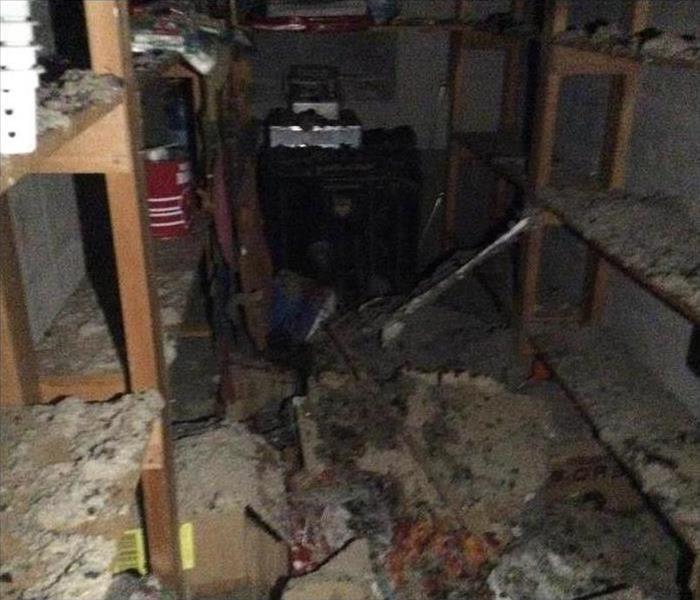 Severe fire damage in a commercial business
Severe fire damage in a commercial business
How Do You Calculate Fire Damage Loss?
Fire damage cleanup is a process that takes time, skill, and patience. The first step to estimating the fire damage restoration costs is assessing the extent of the fire damage. This means assessing how much smoke and soot was produced by the fire, as well as how much heat was generated during its course of action. We can then further assess any structural damages caused by thermal exposure; this includes charring or warping of wood, steel beams being exposed to high temperatures and other such issues that may arise due to exposure to these conditions.
The extent of the fire damage
The first thing you should do is contact a professional fire damage restoration company in your Holmen, WI area. The sooner they can get to work on fire damage, the better chance they have of minimizing its effects. Professional help is also necessary because it’s best suited for restoring your home back to its original condition after a fire has been put out and all smoke has cleared.
This type of service requires an initial inspection by professionals who know what they are looking at in terms of potential hazards and risks in your home. They will then begin removing damaged areas as well as any debris (including water) that may be present due to efforts used during putting out the flames or things such as sprinklers going off during evacuation procedures. This process can take anywhere between two days up until several months depending upon severity levels experienced inside your home during those initial moments when everything happened so quickly with little time afforded anyone involved before leaving without warning!
Water damage post-fire
Once the fire has been put out, out is very common to see excessive moisture present. The water used to extinguish the fire and clean up after it will also influence how much damage you can expect a fire to cause. The moisture of the buildings materials and contents is another factor that needs to be considered while estimating the mitigation and restoration costs.
If the fire caused significant damage to your property, it is likely that you have water damage present on your property as well. It is important to call a company, such as SERVPRO of La Crosse County, that can handle both the water mitigation and fire, soot, and smoke damage cleanup!
Estimating the time frame
In general, we can estimate how long it will take to complete the fire damage restoration process by taking into consideration several factors. These include:
- The severity of the fire damage (e.g., whether there was smoke or water damage)
- Your location and proximity to a restoration facility
- The amount of work that needs to be done (e.g., cleaning up soot from walls, cleaning carpeting)
The length of time depends on these factors, but typically ranges from 3-21 days. However, this is just an estimate; every job is different and may take longer or shorter than expected based on its specific circumstances.
The fire damage restoration process can be very long and complicated. That’s why it’s important to have a professional contractor assess your property and give you an estimate for the damages. SERVPRO of La Crosse County is the leading expert in fire and water damage cleanup and restoration in the La Crosse, WI, area. If you are ever in need of disaster restoration services, our team is available 24 hours a day, 7 days a week!
5 Common Questions About Mold
8/26/2022 (Permalink)
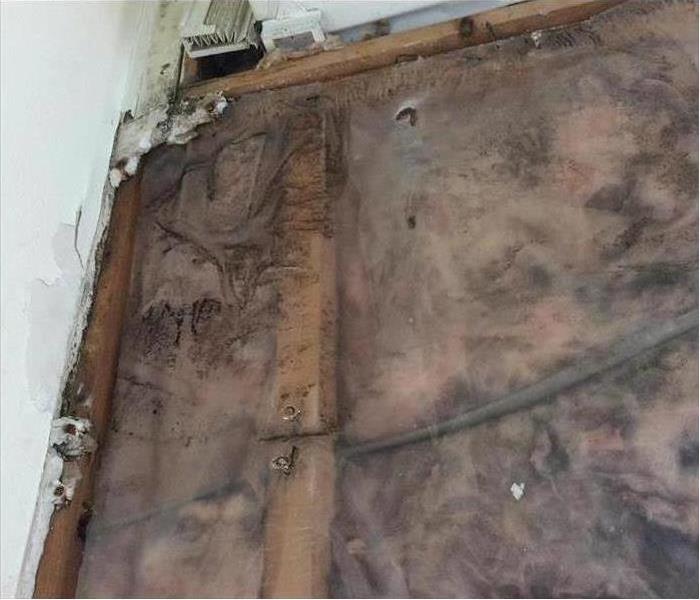 Mold damage in New Amsterdam, WI
Mold damage in New Amsterdam, WI
Protect Your Home From Mold Damage
Mold is an extremely common residential issue that many homeowners have to tackle at some point. Putting a stop to spreading mold is a big part of the remediation process, but even that is only the beginning. Read on to learn how to better protect your New Amsterdam, WI, home from mold damage.
1. What Is Mold?
Mold is a living organism. Many people mistake it for a plant or bacteria, but it's actually a member of the fungus kingdom.
2. How Does Mold Spread?
Mold spores are always present in the air around us. Mold itself needs moisture and a source of organic matter in order to actually grow, however. Mold growth occurs when the spores in the air attach to a damp surface or object. After that, it only takes about 24 hours for signs of black mold to appear.
3. How Can You Stop Mold from Spreading?
The first step to putting a stop to spreading mold is to identify the source of the problem. Perform a thorough home inspection to figure out where the moisture is seeping into your home, then resolve the issue.
4. What Are Some Common Mold Causes?
Any number of factors could contribute to your home's mold growth. Water damage, such as leaks or flooding, are common cause. You're also likely to find mold growing in your walls, ceilings or window sills if your home's humidity levels are too high.
5. How Do You Get Rid of Mold?
You can tackle smaller mold issues on your own using a non-toxic, homemade cleaning solution. A simple mixture that consists of equal parts water and white vinegar can work wonders. Larger problems might require mold remediation experts, however.
Spreading mold can quickly take over your home if you don't handle the issue swiftly and effectively. Contact mold remediation experts for assistance with your residential mold issues.
How To Be a Grill (Cleaning) Master
8/21/2022 (Permalink)
Grill (Cleaning) Master
No grill master ever earned the title without first being a grill cleaning pro. Whether it’s a yard sale steal or a top-of-line splurge your summer staple needs regular maintenance and cleaning to remain the master’s tool it is. Before you grab your apron grab your gloves and prepare for major seasonal cleaning, making your grill the best it can be for a Rockland,WI summer!
Gather Your Materials
As every master knows, a successful grill session requires all materials to be prepared beforehand. With the same concept in mind, prepare for your grill cleaning session with a few necessary supplies:
- Work gloves
- Grill brush
- Stainless-steel wipes
- Whisk broom
- Bucket
- Dish soap
- Foil
- Paper towels
Know Your Terrain
Proper grill maintenance will minimize the risk of a grease fire, improve the performance of your grill and provide a clean aesthetic for your grill mastery. While there are some variances for cleaning charcoal and gas grills, start with the basics:
• Wearing work gloves, remove grill grates, racks and pans and set them in a bucket of hot water and dish soap. It is best to start this process while the grill is still slightly warm, but ensure all dials are off and the propane tank is disconnected.
• Cover heating elements with foil and use the grill brush to vigorously scrub the underside of the hood and inside walls of the grill and wipe down with a wet paper towel.
• Remove the components from the bucket and scrub down with the grill brush before replacing inside the grill.
3 Important Components of Your Fire Safety Plan
8/16/2022 (Permalink)
Three Important Components of A Fire Safety Plan
A business fire occurs in more than 30,000 businesses every year. Fire prevention is important for reducing your chances of a fire occurring. However, it is also important to have a fire safety plan in place so that you are prepared if a fire does happen.
1. Fire Safety Equipment
Installing and maintaining fire safety equipment is a critical fire preparation step. Sprinkler systems and fire extinguishers can be used to douse small fires before they can spread to the rest of your building. Have your extinguishers and sprinkler system inspected regularly to ensure proper function. Train all employees on the proper use of fire extinguishers, including when it is best to evacuate, rather than attempt to put out a fire.
2. Evacuation Plan
Your priority in any business fire should be to ensure the safety of all employees, customers, and other people occupying your property when a fire occurs. Install and test fire alarms, so that people have enough warning to evacuate your building before the fire spreads. Drill your employees on evacuation procedures and make sure they know how to assist customers and guests who also need to evacuate safely. Keep your fire exits clearly marked and free of clutter. Establish a meeting point where you can ensure all employees are accounted for.
3. Fire Safety Procedures
All employees should receive written instruction on safety protocols, such as not storing combustible materials near open flames. Make sure you are enforcing your protocols and periodically updating them and providing ongoing training. Give your employees contact information for fire restoration and other services in Holmen, WI, that they may need if fire damage occurs.
Both fire prevention and fire safety are important aspects of avoiding and mitigating the damage from a business fire. Make sure you always have a fire safety and prevention plan in place.
Mold 101
7/20/2022 (Permalink)
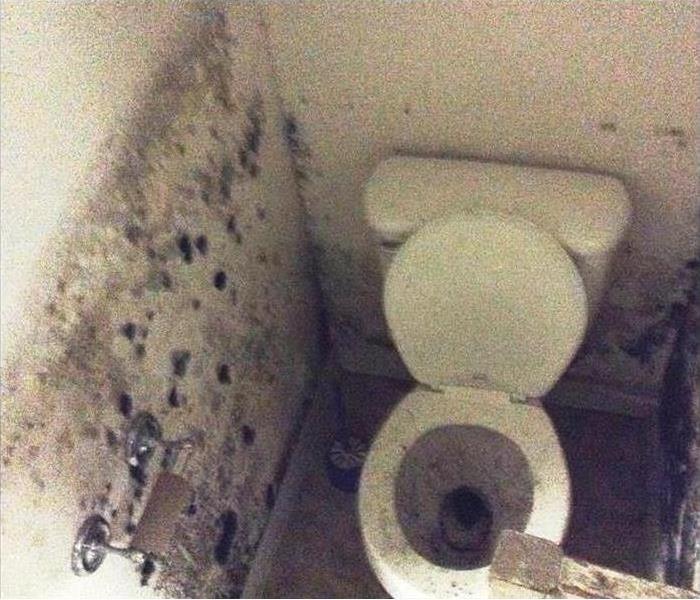 Mold growth in a bathroom
Mold growth in a bathroom
Understanding Mold Growths Cycle
When you start noticing a musty smell, you know your home in Holmen, WI, has been infected with mold. While you can count on black mold remediation and restoration expert to take care of the problem, avoiding mold cleanup is always preferred. While it may not always be avoidable, understanding its growth cycle and taking preventive measures may help reduce the chances of an infestation.
Life Cycle
Mold is everywhere. Luckily, it requires the right conditions to grow in your home. When the temperature is just right, there is excess moisture and plentiful food—organic materials found throughout a home—black mold has the ability to start its growth cycle within 24 to 48 hours. These fungi have four stages in their life cycle:
Hyphae Growth: When ideal conditions come together, so do the mold’s cells. Hyphae are thread-like cells that take in all that nourishment and release enzymes, which is often where the odor comes from. They eventually grow in numbers and become mature mycelium, which is when the mold becomes visible.
Spore Formation: Spores eventually start to grow on the ends of the hyphae.
Spore Dispersal: After they are completely developed, they become airborne. They spread in search of new locations to start the process anew.
Spore Germination: Once they find a new ideal location, they begin to germinate and start the cycle over. Unfortunately, they can remain dormant for extended periods of time.
Prevention Tips
Any kind of moisture problem can bring spores back to life. Below are some tips to keep the right conditions from happening:
- Keep humidity levels below 50%.
- Ensure your home is well-ventilated, especially in the bathroom and kitchen.
- If any leak appears, fix it immediately to minimize water damage.
- Consider using mold-resistance materials when making repairs.
- Items that sustain water damage should be replaced.
While black mold may be lurking in the shadows, it doesn’t have to become a reality. Understanding its life cycle makes it easier to take steps to avoid it.
Top 5 Water Damage Prevention Strategies
7/19/2022 (Permalink)
Ways To Protect Your Home From Water Damage
Water damage is one of the biggest headaches that residential homeowners have to deal with. On top of the initial accident, floods and leaks can cause a lot of subsequent costs in secondary damages. The best way to avoid these types of problems is to prevent the incident from happening in the first place. Follow the tips below to help protect your home in French Island, WI.
1. Check Pipes Regularly for Leaks.
It's important to perform regular home inspections for leaky or broken pipes. These types of incidents are easy to overlook, which can cause a lot of damage over time. Inspect any exposed pipes in your basement and underneath all of your sinks.
2. Monitor Your Home's Water Pressure.
If your water pressure is too high, you run the risk of putting undue wear and tear on your pipes. You can obtain a water pressure gauge from your local hardware store that you can use to manually monitor the pressure.
3. Regularly Check Home Appliances.
Any home appliances that use water, such as your washing machine or dishwasher, need to be checked regularly for leaks or other forms of damage. Floods that originate from these appliances can cause gray water damage.
4. Clean Out Your Gutters and Downspouts.
Your gutters are intended to collect and redirect water that runs off of your roof. However, they can often become clogged with dead leaves, branches and other forms of debris. When this happens, water can pool and collect in your gutters, eventually running down the sides of your house and causing damage.
5. Shut Off Your Water Main Before Leaving for Extended Periods.
If you plan to go on vacation or some other form of extended trip, make sure you turn off your water main before you go. This significantly reduces the chances of you having to deal with a water cleanup issue when you return.
Water damage can be devastating to residential properties, so it's important that you learn how to protect your home. Contact water remediation experts for more information, or assistance resolving a water-related mishap.
Resolving Sewage Backup in Your Bathtub
7/11/2022 (Permalink)
Sewage Backup Techniques
Your bathtub is supposed to be a safe haven where you can relax, unwind and clean yourself up after a long day. Unfortunately, sewer backup can invade your tub when you least expect it, dashing your hopes for a calm evening. If your bathtub in Mindoro, WI, has fallen victim to sewage backflow, just use the following steps.
1. Protect Yourself and Your Household.
Sewage floods are considered Category 3 floods, as they contain a plethora of harmful biohazards. Protect your household by removing all children and pets from the area until the mess is cleaned up. Make sure you don the correct protective gear before tackling the mess as well.
2. Turn Off the Main Water Supply.
Prevent the flood from getting any worse by immediately shutting off your main water supply. You can usually find this valve in your basement.
3. Inspect Your Vent Pipe.
It is possible that the flood causing bathtub backup is a result of a blocked vent pipe. The vent pipe is typically located on the roof of your home, just above your bathroom. Use a flashlight to check for obstructions and remove any that you discover.
4. Snake the Bathtub Drain.
If the vent pipe isn't causing the flooding, then head back to your bathroom and attempt to snake the drain for clogs. Feed the snake down the drain, carefully, and twist counterclockwise as you slowly pull it out. If this method is successful, the sewer backup should begin to drain.
5. Thoroughly Disinfect the Area.
The biohazards present in black water are hazardous, so you absolutely need to make sure that you thoroughly clean and disinfect any surfaces that the flood water came into contact with.
Sewer backup can be messy, but the clogs are typically easy to fix, even if you don't have any prior plumbing experience. If the techniques described above did not fix the problem, then you need to contact flood remediation experts as soon as you can.
The Effects of Lightning on Residential Property
6/21/2022 (Permalink)
Residential Property Damage Caused by Lightning
According to the National Fire Protection Agency, homeowners are more likely to suffer lightning fire damage from June to August. Those sunny mornings transform quickly into fierce afternoon and evening showers. The storm frequency increases the odds of a residential strike.
However, strikes can occur at any time of year, leaving residents with a long list of expensive safety and cleanup needs. Anyone, therefore, is at risk, so it's crucial for owners in West Salem, WI, to understand the threat. The following are three things to know about the aftereffects of thunderstorm harm.
1. Lightning Damage Is Expensive
The Insurance Information Institute notes that in 2020, insurance companies handled 71,551 claims, paying out as much as $2.1 billion for damage. The group's report reveals that most individual requests for lightning-related destruction cost around $28,000, with situations in California costing upwards of $217,000.
2. Strikes Affect Multiple Aspects of Your Home
The high cost for repairs stems from the various aftereffects of the lightning fire. The structure faces a significant power surge when the bolt hits your home in West Salem, WI. Because an electrical current can travel through electrical, cable and phone wiring, you may experience a direct hit or find yourself the victim of a nearby strike.
Inside the house, it can wreak havoc on the appliances and technology, frying their circuits or creating short fuses. Furthermore, fires can start, spreading throughout various rooms, and the bolt's impact could crack or breach structural materials and the foundation.
3. Your Home Needs Professional Assessment
During a house fire or lightning-related event, leave the house. Request help certified fire damage experts who can assess the property, determine the extent of the damage and put together an action plan for cleanup and repair.
Lightning fire is common and devastating. Restoration is needed to ensure the property is safe to use; therefore, work with specialists who understand storm impact and how to remediate the damage.
Types of Solar Panel Damage and How To Prevent It
6/9/2022 (Permalink)
The Different Types of Solar Panel Damage and How to Avoid Them
After installing solar panels on your Onalaska, WI, home, you get peace of mind that you have invested in sustainable energy. These panels are rugged and built to last, but that doesn’t mean you won’t sustain some panel damage. Awareness of the common forms of damage and how to prevent them from happening are key to them lasting as long as possible.
What To Expect
Weather and nature are the top culprits when it comes to your panels getting damaged. Common issues include:
- Dust and Debris: From small twigs to large branches falling and dirt settling, all of these may create scratches that deter the panels from being able to absorb sunlight.
- Animals: Along with creating microabrasions, small mammals and birds may also damage wires.
- Hail: Whether small pieces or large ones, hail can create cracks and scratches.
- Water: If seals are worn, water may leak in and cause panel damage. Along with potentially short-circuiting the panels, excess water may indicate a bigger problem with the roof. If not addressed, it may require the services of a water damage remediation and restoration
Roof Damage Prevention Tips
While some damage may be unavoidable, such as from hail, there are ways to protect the panels and minimize the chances of damage.
- Regularly clean them to ensure debris and dust aren’t settling on them.
- Install a panel protection cover, which provides protection from rain and hail.
- Apply a layer of protective methacrylate to beef up the panels’ ability to resist cracks.
- Stay on top of weather conditions and inspect panels after a storm.
If your solar energy system was installed correctly, it means not having to worry about panel damage for a while. It is still necessary to know the common causes of damage and take steps to prevent issues from arising and protect your investment.
What Should You Do If Water Damages Your Wooden Floor?
6/6/2022 (Permalink)
What Should You Do If Your Wooden Floor Is Damaged by Water?
You may think that a bit of water on your property’s wood floor is no big deal. Unfortunately, that is not the case. Because wood is so porous, it absorbs water quickly. Even a small spill can therefore cause stains to develop. Larger flooding to your commercial building could also lead to floor buckling.
While waxing and sealing your floors can help block moisture, this does not completely prevent the absorption of water. If your property suffers a pipe burst that wets your hardwood floors, you should thus clean those floors as quickly as possible to prevent further damage. Here are some other steps to take when you discover water on a wooden floor.
1. Remove Objects From the Wet Floor
Any wet furniture or rugs should be removed from the hardwood floors for drying. If not properly dried, those items could encourage the growth of mold or mildew. The moisture from the furnishings could also drop onto the wood if they are left on the floor.
2. Soak up the Water
You can try to use mops or towels to soak up the excess liquid. However, if there are large puddles from a pipe burst, you may need a wet vacuum to remove the water. Cleanup and restoration professionals should have this tool available. You should thus hire them for any major water damage remediation projects.
3. Clean the Wood
The job is not done once the water is gone. The water may have still left behind dirt in the pores of the wood. Be sure the restoration experts you hire scrub away this debris.
4. Dry the Wood
Drying the wood should be the final step. The cleanup experts should use fans and dehumidifiers to expedite this process.
If a pipe burst or flood causes a buildup of water on your wooden floors, you need to remove the liquid as soon as possible. Remediation experts in La Crosse, WI, can ensure that the floor is completely dry.
3 Steps To Take Immediately After a Business Fire
5/24/2022 (Permalink)
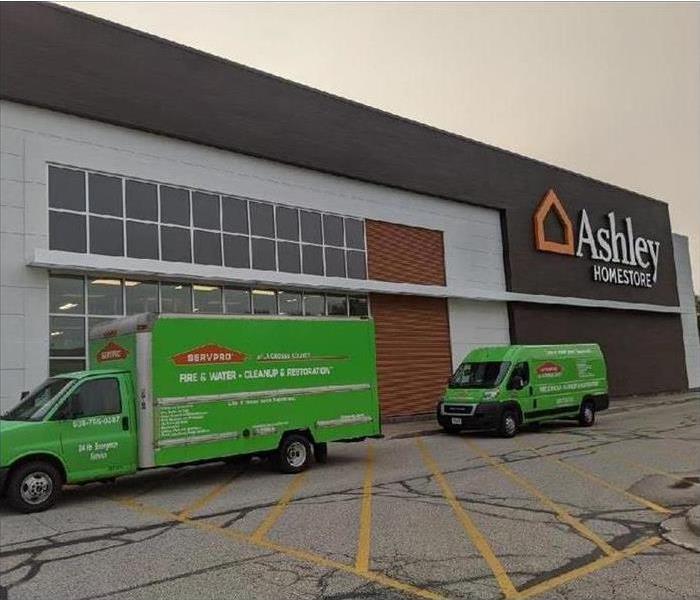 If you experience a Fire Emergency, call SERVPRO, our team is trained on how to restore fire damage like smoke and soot damaged contents.
If you experience a Fire Emergency, call SERVPRO, our team is trained on how to restore fire damage like smoke and soot damaged contents.
3 Things To Do Right Away After A Business Fire
After a fire damages your Holmen, WI, business, the aftermath can feel overwhelming. Not only will you need fire restoration services but your employees will want to know how long it might take before you can reopen. Knowing which steps to take immediately after a business fire can help you feel less anxious about the cleanup process, especially with fire damage you cannot clean up on your own.
1. Contact Your Fire Insurance Company
Once firefighters douse the blaze and you can enter your property safety, contact your insurance agent right away to let him or her know what happened and the size of the fire. Send photos and video so your agent can file a claim right away and provide you with the means to pay for a fire restoration and cleanup service as soon as possible. Keep copies of any media you send.
2. Turn Off Water and Power Sources
Your building's electricity and plumbing may be damaged by the heat, smoke and soot fires cause. If it is safe to do so, turn off the power sources and water to the building or, if you lease, ask the building's owner to do so, as this can prevent secondary damage, such as electrical shorts and flooding from burst water lines, which can make fire restoration more difficult.
3. Document Your Needs
Once you can inspect your building, make a list of all the damage you find. You may require a variety of different services, from drywall replacement to smoke cleaning, especially if the fire damaged any of your inventory. Set aside damaged electronics, as your fire cleanup and mitigation service may be able to help you restore them.
A fire at your Holmen, WI, business can make you feel anxious and unsure of where to turn. While these feelings are natural, you do not have to face the future and fire restoration alone when you understand which steps to take once is the fire is out and who is standing by to assist you.
3 Steps To Take After a Commercial Fire
5/17/2022 (Permalink)
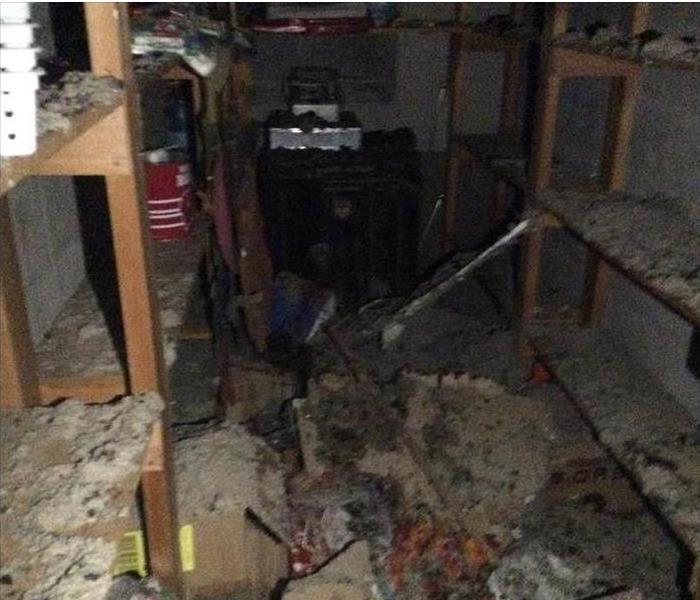 When fire damage occurs, it's important to call a professional as soon as possible so that we can get started right away!
When fire damage occurs, it's important to call a professional as soon as possible so that we can get started right away!
3 Things To Do After A Commercial Fire
A fire can cause a tremendous amount of destruction to your business, even if you have a fire mitigation plan in place. After the blaze is out, you may be unsure of how to handle the fire damage. Here are three steps you should take following a commercial fire.
1. Call Your Insurance Adjuster
The first thing you should do is call your insurance company. The claims process often can take months, so you want to get it started as fast as possible and be ready to provide the necessary documentation to avoid delays. After you start your claim, your adjuster can refer you to a fire restoration company in Onalaska, WI, to begin the cleanup process.
2. Secure Your Business
The fire damage likely broke windows and burned holes through your property's ceiling and walls. If you leave those issues unaddressed, you could be opening your business to more harm from vandals and the weather.
To secure your property, seal off windows and holes in the walls by covering them with thick plywood. Place a tarp securely on the roof to prevent animals and rain from getting in.
Be mindful that a fire can weaken the structural integrity of your building, so never enter the premises without approval from the fire department.
3. Remove Your Belongings
Even if furniture, electronics and inventory don't have fire damage, they could still be destroyed when left to sit in a room filled with corrosive smoke and soot. To help protect what you can and mitigate your losses, remove your undamaged belongings as soon as possible. After you place your items in a storage facility or an off-site warehouse, have them professionally cleaned and restored.
While the fire restoration process might feel overwhelming, you don't have to handle it alone. Relying on the pros will have you back in business in no time.
Opportunities To Protect Your Business From a Fire Disaster
5/11/2022 (Permalink)
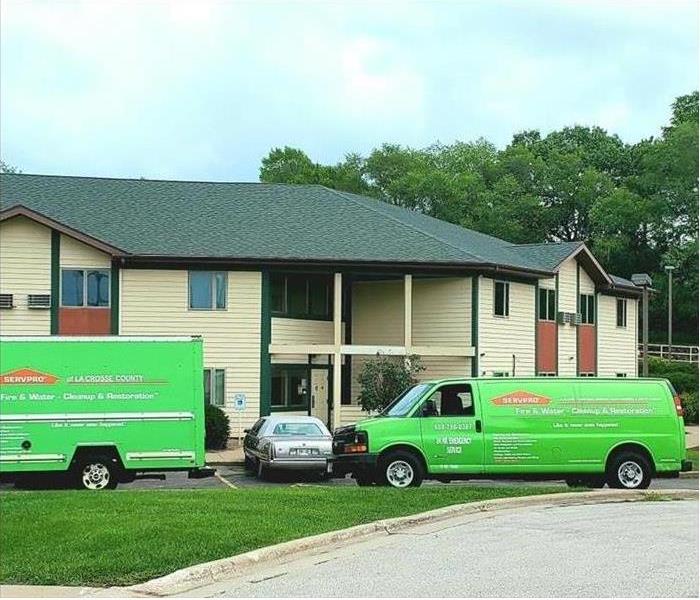 A fire is a traumatic event regardless of the size. Our SERVPRO of La Crosse County team is the best in the business, call us!
A fire is a traumatic event regardless of the size. Our SERVPRO of La Crosse County team is the best in the business, call us!
Opportunities To Prevent A Fire Disaster In Your Business
The National Fire Protection Association consistently shows that about 500,000 fires occur annually in the U.S. that require a fire department response. While about 75% of these fires are residential, that leaves well over 100,000 significant business fires a year. This makes solid fire preparation a priority for just about any business. Fortunately, there are important steps your company in Rockland, WI, can take at different stages to reduce or stop the damage from a fire.
Disaster Preparation Before a Fire
This time frame is crucial to enhance fire preparedness. A long list of precautions can put your company in a strong position to limit the impact of fire:
- Install smoke alarms
- Install sprinkler systems
- Purchase the appropriate fire extinguishers
- Educate employees on fire response
- Write up a fire management plan
- Store critical data in a safe place
Smart actions at this stage can have enormous benefits. Some steps such as identifying potential hazards could even prevent a fire entirely.
Fire Preparation During a Fire
Planning can also payoff even as a fire is underway. Making sure all employees know to call the local fire department as soon as possible is critical to a timely response. The ability to move employees and customers to a place of safety often depends on a detailed and clear evacuation plan. This should be posted in accessible spots throughout your facility. The goal at this time is to save lives, prevent injuries and reduce fire damage to property.
Professional Cleanup After a Fire
A lot of fire mitigation work goes on after a fire has been put out. A local fire restoration team in Rockland, WI, can arrive quickly and hit the ground running with certified workers and specialized equipment. Experienced technicians will handle soot and smoke damage and quickly restore your facility to its pre-fire condition.
In today's world, smart fire preparation is a necessity. It protects your company's interests at all times.
Effective Ways To Clean Up After a Flood
4/25/2022 (Permalink)
Methods For Cleaning Up After A Flood
Working in West Salem, WI, means you may be at risk of experiencing a flood in your building. The consequences of having a flood on the property can be disastrous. Not only will you worry about your building itself, but you have many personal belongings and office items to care for. The good news is that with the right help, you can salvage many of these things with proper content cleaning.
Using the Pros
For minor water problems at work, you can probably clean up well and not stress out about whether your contents are safe. However, when the flood is more widespread, you'll need a professional water removal team to help. Experienced technicians offer the following:
- Quick response, even after hours or on the weekends
- The right equipment for even the biggest jobs
- Experience and expertise in handling all types of flooding
Cleaning Carpets
Flooring, especially carpet, can suffer a heavy toll after a storm and other sources of flooding. Getting carpet back to normal is one of the most common types of content cleaning that professionals handle. The technicians will first pull up the carpet and padding to assess the damage underneath. After extracting the water and sanitizing the area, the techs will thoroughly dry it. If necessary, the team will replace the carpet.
Drying Out Electronics
Never try to clean heavily wet electronics by yourself. Professionals have the tools and skills to safely clean water-damaged computers, printers, monitors, and other devices. The team will first clean the outside of the electronics before removing any moisture from the inside.
Restoring Documents
Any type of water, particularly black water, can spell big trouble in your office. You may think that documents such as books, files, maps, and photographs don't stand a chance against flooding. Cleanup crews have the training to handle documents delicately and use freeze-drying techniques to clean these materials properly.
Content cleaning is vital after water damage in the office. Professionals companies can clean flooring, electronics, documents and more. This can give you peace of mind amid a disaster.
Top 5 Mistakes When Using a Fire Extinguisher
4/19/2022 (Permalink)
The Top 5 Mistakes To Avoid When Using A Fire Extinguisher
Most homes have a fire extinguisher, but do you know how to use one properly? Do you know where it is located in your house or residential complex? The biggest mistake is to put off learning until it's too late.
1. Forgetting the Safety Pin
The pin prevents accidental use of the fire extinguisher. However, if you forget to disarm it, the tool will not be able to do its job. Locate it on the handle, and pull upward to remove.
2. Touching the Nozzle
A CO2 extinguisher causes the nozzle to be extremely cold to the touch. This can possibly harm the skin. To be safe, don't touch this part of the fire extinguisher. The CO2 kind can be identified its stiffer nozzle and absence of a pressure gauge. Regardless, it's best to keep humans away from the front end.
3. Aiming Too High
The natural instinct is to start at the top of the flames and work your way down. However, it's most effective to make a sweeping motion at the base of the fire. This way, whatever is igniting the flames will go out more quickly.
4. Getting Too Close
Furthermore, panic sets in during a fire emergency. Resist the urge to get as close to the fire as you can. This will only make you vulnerable to burns. In most small cases, like a kitchen fire, it can be put out farther away.
5. Being Overconfident
Firefighters are trained to put out fires for a reason. It's harder than it looks. Many individuals will think that they extinguished the flames, so they are done. That isn't the case. After doing the sweeping motions, wait to see if the fire reignites.
Large fires are often too difficult for an extinguisher to put out. If the flames get out of hand, evacuation is the best plan. If fire damage occurs, you will need to contact the local fire damage remediation experts in Onalaska, WI. Cleanup on your own is not safe due to possible structural damage.
5 Tips for Preventing Water Damage in Your Home
4/12/2022 (Permalink)
5 Ways To Avoid Water Damage In Your Home
For a new homeowner in La Crosse, WI, especially one who has only ever lived in apartments, the maintenance list for your new purchase can seem daunting! As you plan how to manage lawn care, home upgrades, and regular maintenance, make sure that your checklist includes steps for preventing water in your home. Water intrusion can be costly in a number of ways. Here are five things you can do to prevent water damage.
1. Check Seals
Especially in the basement and near windows and doors, check to make sure that all edges are sealed. Even a slight crack in the caulking can allow water to seep, causing mold damage or structural problems.
2. Inspect the Roof
A leaky roof is a common way that you can end up with water in your home. Look for wet or discolored spots in the attic that indicate the presence of water. If you're unsure as to whether water damage has occurred or is occurring, call a local water damage specialist to complete an assessment.
3. Extend Downspouts
Water that pools around the foundation of your house will compromise the structural integrity of your home. Ensure that the downspouts are not cracked and that they extend at least two feet away from your home to prevent water pooling.
4. Maintain Drains
If a sink is slow to drain, don't ignore it. A clogged pipe can lead to a broken pipe if the clog isn't cleared. The pressure of water building up can compromise your plumbing and lead to big problems.
5. Upgrade Pipes
In an older home, check the status of the pipes. Pipes that are corroded or old can easily crack under pressure or from extreme temperatures. If a pipe does crack, a leak might occur, causing extensive damage in a short amount of time. Pipe cleanup and repair can protect your home.
Preventing water in your home is a simple matter of following a regular home maintenance schedule. Always contact a professional if you're concerned about potential damage to your home.
3 Ways to Prepare for a Winter Storm
3/19/2022 (Permalink)
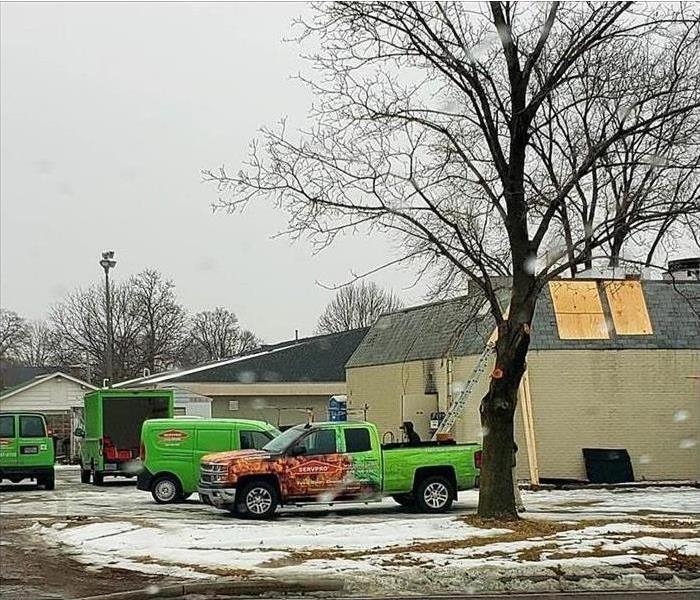 When your business operations are interrupted by storm damage, you need professional help to get your property back to business. Call SERVPRO.
When your business operations are interrupted by storm damage, you need professional help to get your property back to business. Call SERVPRO.
3 Winter Storm Preparation Methods
Winter storms ravage the country year after year, leaving people stuck in their homes without power, heat, and communication devices. Avoid being stranded inside without the necessities you need to remain comfortable and safe. Following these simple steps will prepare you and your family for the inevitable winter snowstorm.
1. Stay Current
Several excellent sources are available to keep you updated on current weather patterns:
- Internet
- Television
- Radio
- Newspaper
Meteorologists typically warn the public of a potential winter storm a day or two in advance. As violent weather nears, the warning becomes a storm watch. At this point, the news will provide information on what to expect and how to prepare.
2. Be Prepared
When you anticipate a heavy snowstorm in New Amsterdam, WI, stock up on essentials before it arrives. Make sure to fill necessary prescriptions and purchase batteries for flashlights. Turn your water off to avoid a pipe burst, and eliminate the need for water damage repair once the storm has passed.
Roads are often treacherous in winter months, making quick trips to the grocery store impossible. Make sure you have enough food to last your family a few days. Accumulating nonperishable snacks and clean drinking water will eliminate the need to risk the icy, hazardous roads outside.
3. Communicate With Your Employer
Commuting to work during a winter storm is incredibly scary and very dangerous. Protect your safety and that of your coworkers by establishing a work-from-home plan in the event of an emergency. Be sure to remain in contact with your employer, as bad weather can last for hours, days, or even weeks.
Not only is driving to work dangerous, but many issues at home might require your attention during a big storm. Power outages, canceled school, and household damages are common and stressful in the winter months. Establishing a work-from-home plan allows you to manage your home while still maintaining your workload.
Winter weather is dangerous and unpredictable. Properly preparing for the next big snowstorm will keep your family safe, your house intact, and your work accessible.
The Best Large Loss Restoration Company Qualities
3/14/2022 (Permalink)
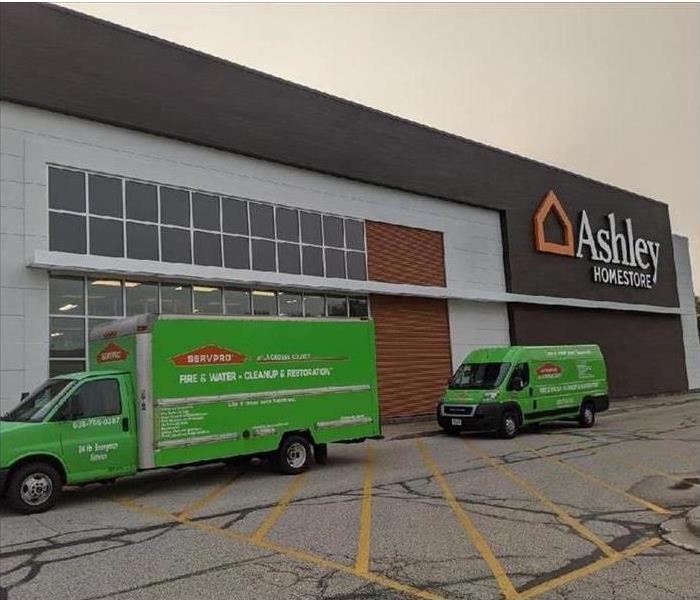 Our team at SERVPRO of La Crosse was called to this Ashley Homestore after finding water damage in the building. Call us when you need it.
Our team at SERVPRO of La Crosse was called to this Ashley Homestore after finding water damage in the building. Call us when you need it.
Characteristics Of The Most Effective Large-Loss Restoration Firm
Disasters happen. When they do, they can ruin everything in your business in Midway, WI. They can also force you to shut down until repairs are finished. The result is a serious interruption that you want to be remedied as soon as possible. That's why you need to know what qualities to look for in a large loss restoration company. Knowing what to look for can help you choose the best company. That will help you recover from any disaster, whether you face flooding or blizzards. This can get your company back to normal quickly.
Experience With Numerous Loss Sources
You want to look for a company that has experience with several types of loss sources. For instance, you should look for a company that has dealt with hurricanes, tornadoes, floods, fires, and broken sprinkler systems.
Offer Comprehensive Services
When recovering from a catastrophic loss, you need a disaster restoration company that handles it all. Find one that offers a comprehensive list of services, including:
- Damage assessment
- Structural drying
- Anti-microbial treatments
- Sewage remediation
- Demolition
- Power setup
- Picture documentation
- Daily updates
Cares About Your Business
You want a company that is going to be reliable. You also want them to do great work. Plus, you want them to communicate well. You may even be looking for someone who cares enough to focus on getting your business back open. That is the ideal catastrophic loss company. They should care about your business enough to get the job done right and work with you.
Place Value First
Obviously, you want the job done quickly. However, you also want your catastrophic loss team to prioritize value over speed. Therefore, you should look for a company that is responsive, caring, dependable, top-quality, good communicators, experts, and trustworthy.
Storm damage and other disasters can happen to any business. If you want to find restoration professionals that can help you get your company back open as quickly as possible, you need to know what qualities to look for.
Clean, but Still Dirty
3/1/2022 (Permalink)
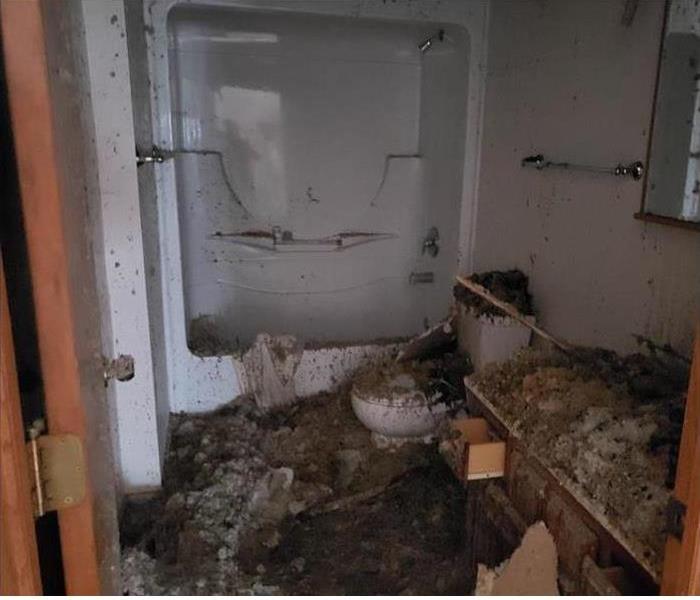 We can react and respond quickly to your commercial damage emergency. Contact SERVPRO, Our team of technicians makes it "Like it never even happened."
We can react and respond quickly to your commercial damage emergency. Contact SERVPRO, Our team of technicians makes it "Like it never even happened."
Even If It's Clean, It's Still Filthy
Many business owners in West Salem, WI, incur heavy losses because they don't clean up their water issues. That doesn't mean they're lazy, it just means that they don't have the knowledge necessary to do a complete recovery. You could also be in danger if you have suffered water damage of any type, including:
- Broken pipes
- Flooding
- Leaks
Black Mold
Black mold is one of the reasons that it's important to have your water damage repair performed thoroughly. This nefarious organic pollutant loves high humidity. In fact, all it needs to start taking over your business's facilities is a little extra moisture. It uses the softened building materials as both food and habitat, creating whole colonies of mold. That's the last thing you want around in a workplace.
Structural Weakening
Mold isn't the only thing that likes wet buildings. In fact, improper drying might lead to infestations of much larger life forms, such as termites or rodents. Termites prefer to eat building materials that have been softened by water, whereas rodents find it much easier to chew through weakened woods. The good news is that, like black mold, it often takes these creatures a little time before they figure out that your structure is vulnerable. If you act quickly enough, you might be able to avoid a secondary damage pest problem entirely.
Not every business owner or facility manager in West Salem, WI, who has water damage develops a secondary mold damage problem. However, it's usually difficult to tell whether or not you're at risk. Even if it seems like you've cleaned up the whole spill, there are still plenty of spaces where you might have lingering moisture and humidity, such as crawlspaces, insides of walls and around fixtures. It's usually better to inspect the area meticulously before calling your cleanup job finished.
Preparing Your Home and Family for a Fire
2/14/2022 (Permalink)
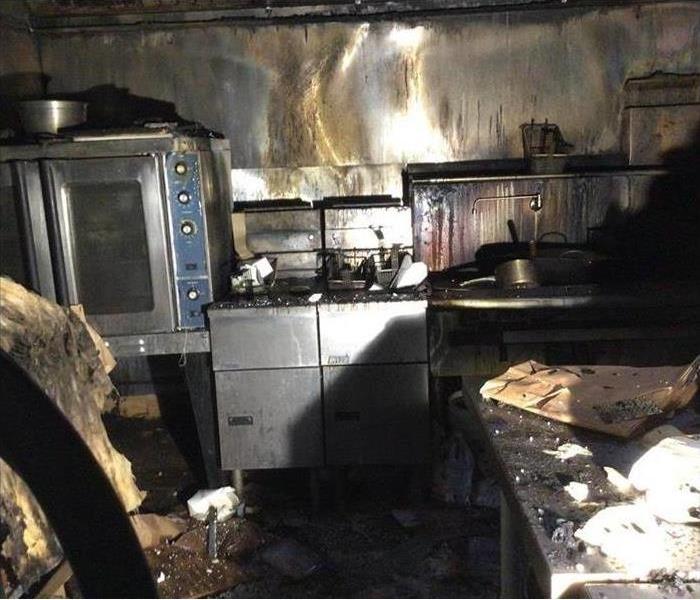 A residential kitchen was almost burnt to ashes in La Crosse County. If you experience a Fire Emergency, call SERVPRO.
A residential kitchen was almost burnt to ashes in La Crosse County. If you experience a Fire Emergency, call SERVPRO.
Prepare Your Family And Home For A Fire
Fire safety is one of the most important things you can teach your children about your home. Having a fire escape plan involves more than just telling everyone to vacate your house in La Crosse, WI, if a fire should break out. To help your plan go smoothly, you must prepare both your home and your family for the possibility of fire.
Preparing Your Home
The first line of defense against a home fire is your alert system. You should install smoke detectors throughout your home in prominent places:
- Inside every sleeping area
- Outside every sleeping area
- In a middle common area on every level
It’s not enough to install the detectors, however. Test the detectors frequently. A sensible time to do so is when you practice your fire escape plan. This tells you if your smoke detectors are working and if they’re all connected like they’re supposed to be.
It’s also important to make sure that there are clear paths to safety. When you are devising a plan, check to see if there are two exits out of every room and that these exits are easy to use. Don’t block windows with chairs or other furniture.
Preparing Your Family
While your fire preparation plan may include contact information for a professional restoration company to make your house safe again, the main priority when a fire breaks out is the safety of the people inside. It’s essential that everyone knows what to do during a fire. Talk about how to get out and where to meet once you do. Set off the smoke detectors and have everyone walk through the process. If you have small children or elderly family members who will require assistance, designate someone specific to do so. Involving family in the plan and practice increases their chances of safety.
No one likes to think about a fire ravaging their home. With a comprehensive fire escape plan, however, you can teach your family how to stay safe if one should occur.
Outside Resources for Recovering From Catastrophic Loss
2/9/2022 (Permalink)
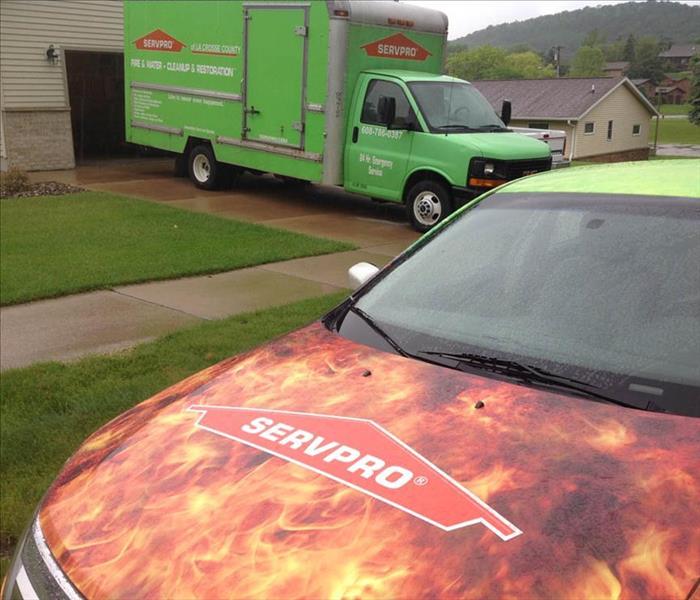 From beginning to end, SERVPRO catastrophic loss teams offer vital services for helping communities recover.
From beginning to end, SERVPRO catastrophic loss teams offer vital services for helping communities recover.
Resources For Recovering After A Catastrophic Loss From Outside Sources
Storm-damaged areas often stretch for miles and miles. This makes it difficult for the families and individuals living in the area to get the recovery help they need. When disaster recovery teams are stretched to the limit, the consequences of the storm and the resulting catastrophic loss puts everything else on hold. Fortunately, some companies, such as local La Crosse, WI, SERVPRO franchises, have adapted their plans to provide large loss services when new disasters hit.
Professionals Play a Vital Role
A quick response to storm damage and flooding isn't just for preventing further damages. Professional services are necessary for the safety of members of the community:
- Flooded homes may conceal risks of electrocution. Entering water-logged properties requires the right protective clothing and specialized equipment.
- Wet fabrics and upholstery become very heavy and handling the items with adequate preparation could lead to injuries.
- Facing a catastrophic loss can be overwhelming. Trained technicians are prepared with step-by-step plans to prevent further damage and to speed the recovery process.
Franchises Share Resources
Large-scale disasters often require more labor and equipment than local franchises have on hand. Part of the plan to deal with these situations is a cooperative network. SERVPRO professionals from other communities and specialized equipment from remote locations are available. When the need arises, these resources are mobilized into affected areas. In the past few years, these teams have responded to wildfires, hurricanes, polar vortexes, and major floods.
Bringing Resolution to Communities
After storms clear out and the water recedes, La Crosse, WI, residents may be able to return to their homes. With SERVPRO professionals on hand, communities can begin the work of cleaning up and restoring their lives. In addition to cleaning properties, the technicians work to put mold growth on hold and provide remediation to prevent further spread of mildew. From beginning to end, SERVPRO catastrophic loss teams offer vital services for helping communities recover.
How To Handle Waterlogged Items in Your Home
2/3/2022 (Permalink)
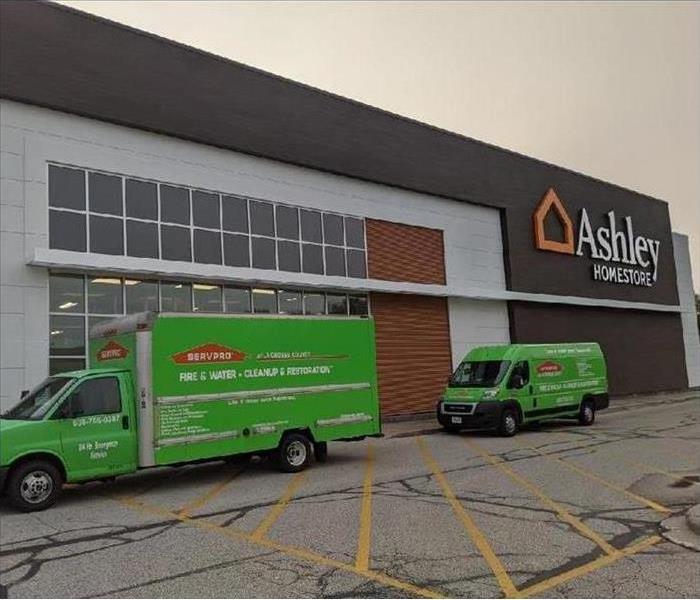 Is water damage present in your home? Call SERVPRO for all your restoration needs. Our crew is always available to take your call.
Is water damage present in your home? Call SERVPRO for all your restoration needs. Our crew is always available to take your call.
What To Do If You Have Waterlogged Items In Your House
If you’ve experienced problems with water in Onalaska, WI from flooding or a broken pipe, you may be wondering how to handle all of your belongings that have been left soaked. By following a few guidelines, you can take the first steps to handling wet items and restoring your home to normal conditions.
Items You Can Save
When looking through possessions that have gotten wet, determine which ones are nonporous. These objects do not soak up water and can therefore be cleaned up easily. Plastic or wooden furniture that is not upholstered should be entirely salvageable. Most types of flooring that are not carpet should also be able to be restored to pre-flood conditions. While you can save these items, it is important that you clean and disinfect them thoroughly to avoid mold growth or other problems that can result from contaminated water.
Items You Should Replace
Fabrics, carpet, upholstered furniture, and other items that water can soak into may have to be more carefully evaluated. Depending on what type of water has invaded your home, you may or may not be able to save these objects. If the water was black or gray water, then it can be best to simply discard and replace porous items. Black water is highly contaminated water that comes from sewage leaks or outside floods. Gray water may be less contaminated than black water but can still contain harmful microorganisms.
If the water was from a clean source, then porous items may be saved through drying and dry-cleaning processes. You can hire a professional damage restoration company to help you sort through affected items and determine the extent of damage and contamination.
Figuring out what to do with waterlogged objects can be the first step to returning life to normal after dealing with water in your home. Sorting through items can help you determine what to keep and what to replace.
Commercial Property Fire: How Fires Can Result in Water Damage
1/4/2022 (Permalink)
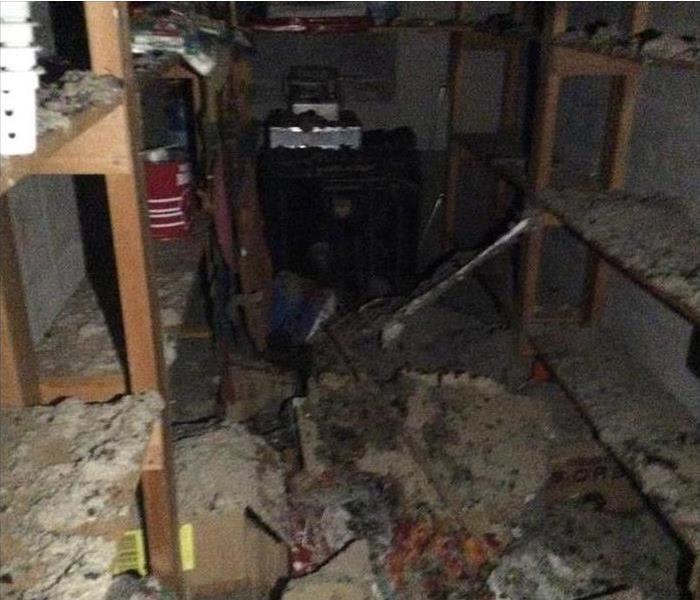 If you already have damage due to fire or water in your commercial property, call SERVPRO, we are ready to help you.
If you already have damage due to fire or water in your commercial property, call SERVPRO, we are ready to help you.
How Can Commercial Property Fires Cause Water Damage?
While fire damage is apparent after a blaze, many business owners are shocked when they are confronted with a surprising amount of water destruction, especially when it occurs outside of the areas affected by the disaster. However, water and fire go hand in hand, and that is somewhat obvious when you consider that moisture is needed in these three common methods to extinguish flames.
1. Fire Hose
The most significant contributors to excessive water in your facility are the hoses used by firefighters to combat and resolve the blaze. These hoses operate at nearly 400 psi, going through gallons of water per second. Additionally, rescuers may need to douse other areas of your building to prevent the flames from spreading through your property onto someone else’s.
2. Fire Suppression System
While some suppression systems are designed only to operate where fire damage is occurring, others open all sprinklers throughout the building when heat is detected. Therefore, the type of suppression system you have can contribute to water buildup after a disaster.
3. Fire Extinguisher
Beyond the main moisture contributors, there are also fire extinguishers. While these are filled with CO2 or other extinguishing agents, they all leave behind residue and water damage. Though mandatory, these tools can contribute to the overall contamination to your property.
Despite the problems that all of these tools inflict on your commercial property, each is necessary and life-saving in its own right. When a fire occurs, it is more important to resolve the issue quickly than to worry about the potential damage. Insurers know the risks, which is why many provide coverage for
a disaster restoration specialist in the La Crosse, WI, area who can help mitigate loss and restore operations.
Water and fire damage are a pair; you can’t have one without the other. However, with adequate insurance coverage, you can resolve and repair the issues sooner rather than later.
Hurricane Season: Making Sure Your Business Is Covered
1/3/2022 (Permalink)
Making Sure Your Business Is Protected During Hurricane Season
Storm insurance, in the most general sense, is likely covered under most commercial policies. However, when you start to specify natural disasters into categories like hurricanes, earthquakes and floods, your policy is not as all-inclusive as you thought. To adequately protect your business this hurricane season, you may want to invest in some insurance riders and policy upgrades.
1. Hurricane and Flood Rider
Typical commercial insurance coverage will cover things like wind storms, but these are not hurricanes. Hurricanes are a different extreme breed of a storm, and as such, they require a specific rider. This is the same for flooding. These specific natural disasters are not general enough to be all-included, meaning that these disasters are typically regional and not nationwide.
2. Business Interruption
Your storm insurance coverage under your standard policy will likely not include business interruption insurance. This means that when your business is forced to close for renovations due to storm damage, your losses will not be covered possibly placing your operation in financial trouble.
3. Business Owner’s Policy
A business owner’s policy will likely bundle property, general liability and interruption insurance under one cohesive plan, but this is dependent on your insurance provider. Many owners find the convenience of bundling beneficial while others prefer to shop around.
A flooding and storm specialist in the Onalaska, WI, area or your insurance provider can offer more insight and clarification into the specific policies and their benefits. Also, they can help you decide which options are best for you and your business. These decisions are primarily tied to location and climate zones, so it pays to get an informed decision.
Storm insurance, specifically coverage for certain severe natural disasters, is beneficial depending on your specific circumstances. Not every business owner requires hurricane coverage, but for those that do, it is helpful to know that a typical policy requires additional riders for that coverage.
4 Steps To Take To Begin a Water Damage Claim
1/3/2022 (Permalink)
4 Steps To Getting A Water Damage Claim Started
Filing an insurance claim after water damage hits your home in West Salem, WI, can be daunting. Stress from the water damage can linger while you try to figure out when to move quickly and when to wait for help; however, no matter what part of your home the flood water damaged, you probably want to begin the claim process as soon as possible after discovering the water. Here are some simple steps to get you started.
1. Contact Water Professionals
No matter what caused the water damage, the first step is typically to contact a water removal professional service. The team can quickly remove the water and help you prevent additional damage to your home that standing water can cause.
2. Telephone Your Agent
When you notify your insurance agent about the pipe burst, the overflowing toilet, or dishwasher eruption, the water damage claim begins. Be prepared to answer questions and send the company any photos you may have taken of the incident.
3. Request an Inspection
During your initial conversation with your agent about the insurance claim, don’t forget to request an inspection by a licensed insurance adjuster. Not only can he or she inspect the water damage, but the inspector can also interview you and collect any additional information you have gathered since the initial interview.
4. Process Claim Forms
Upon receiving the claim form, promptly fill it out and return the pages to your insurance company. If you fear you do not have all of the necessary information, contact your agent to stipulate that the company allows addendums. Request a letter stating the length of time any additional information will be accepted.
Water damage repairs and restoration can be a long process, but if you follow these four steps, you can be well on your way to moving through the insurance claim with a minimum of trouble. During the days, weeks, and sometimes months following the water fiasco, don’t forget to ask questions, keep receipts, and remain in contact with your insurance agent.






 24/7 Emergency Service
24/7 Emergency Service
















